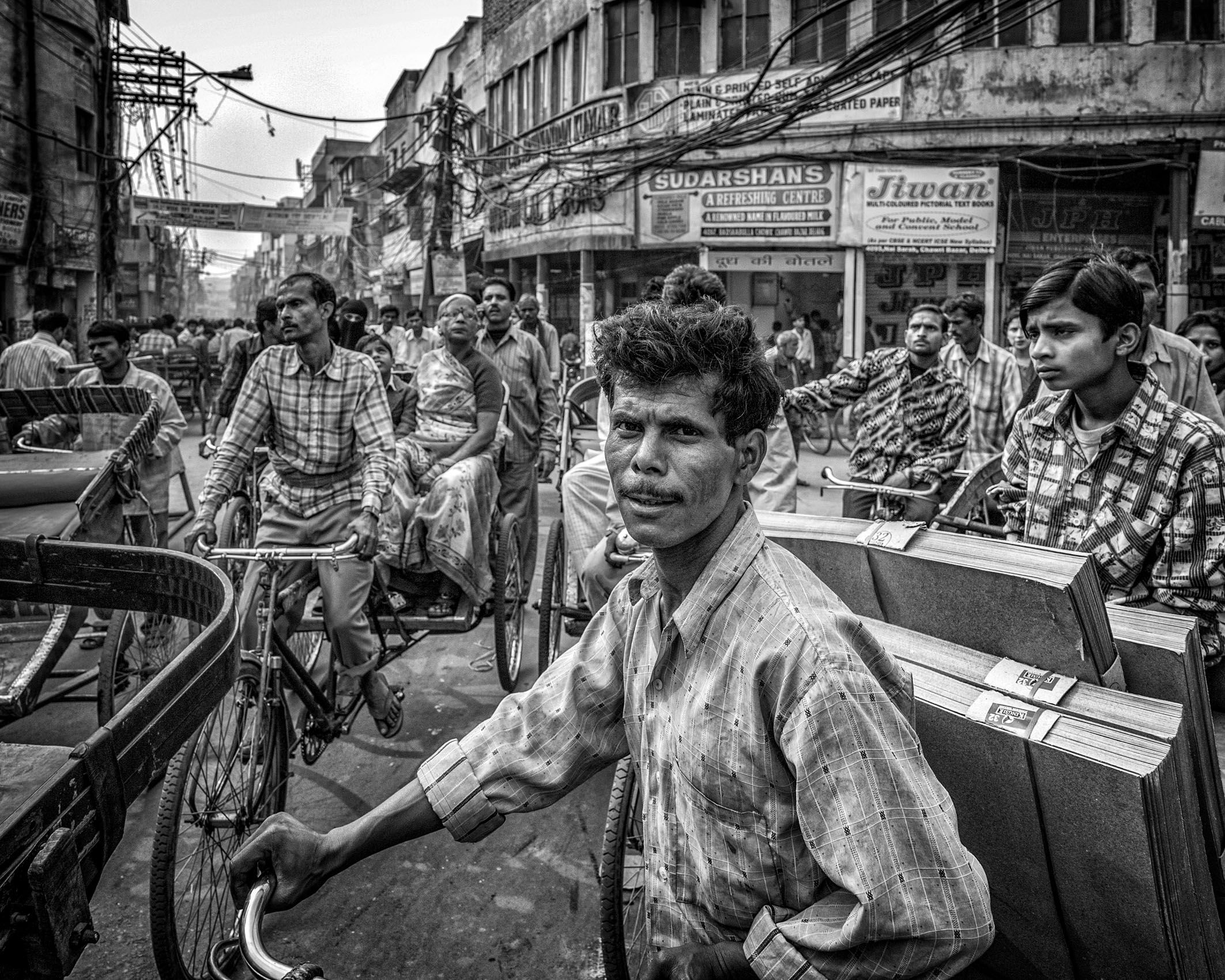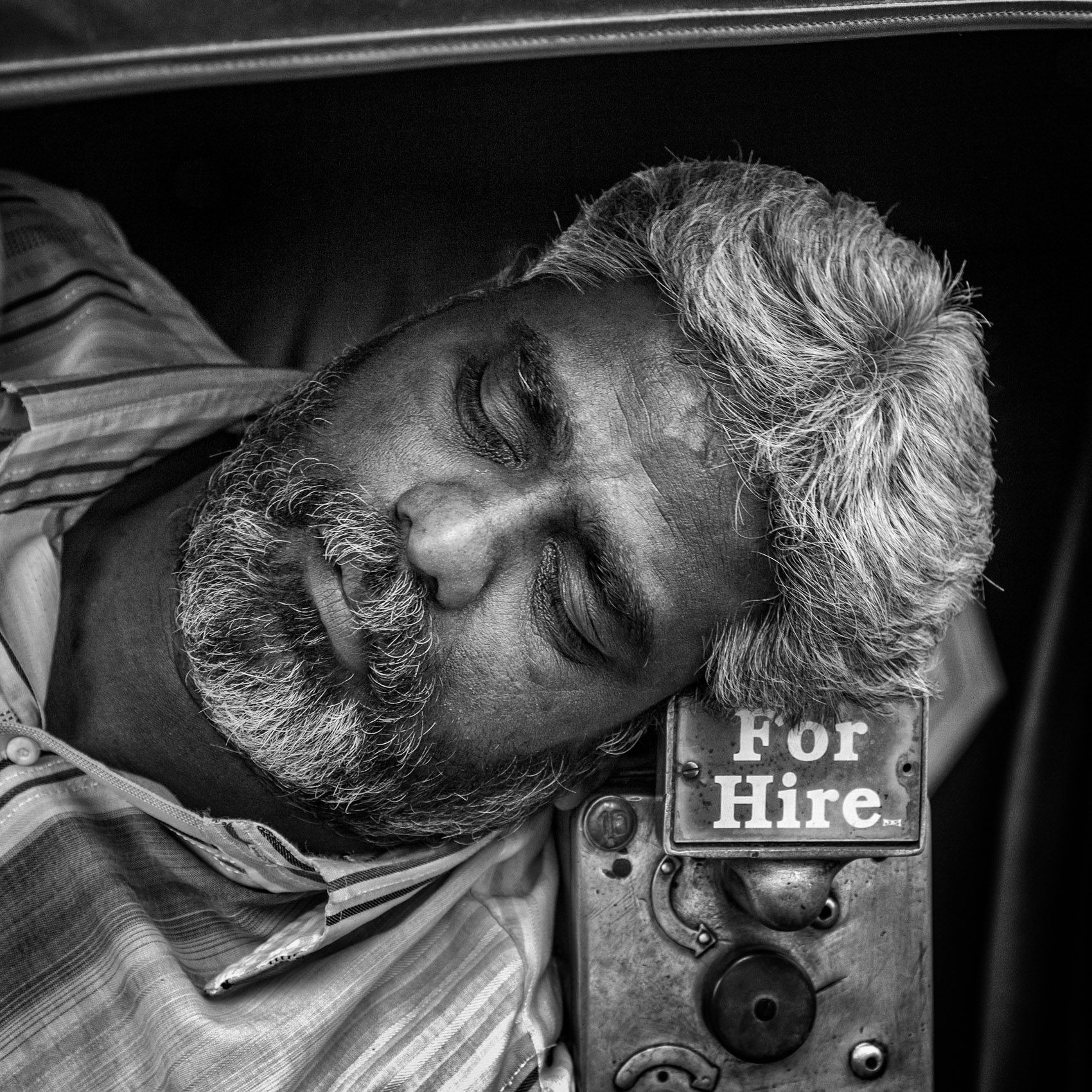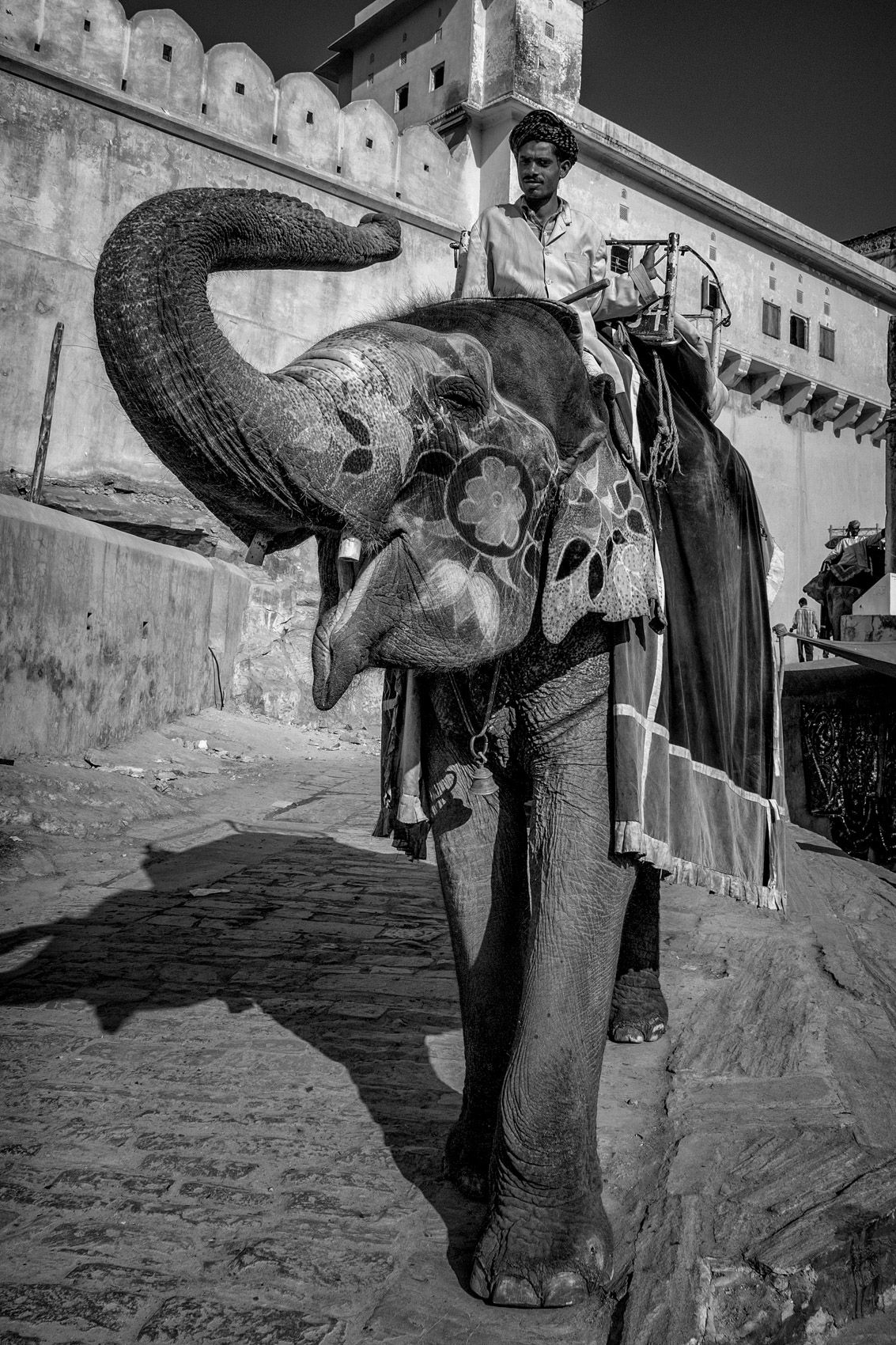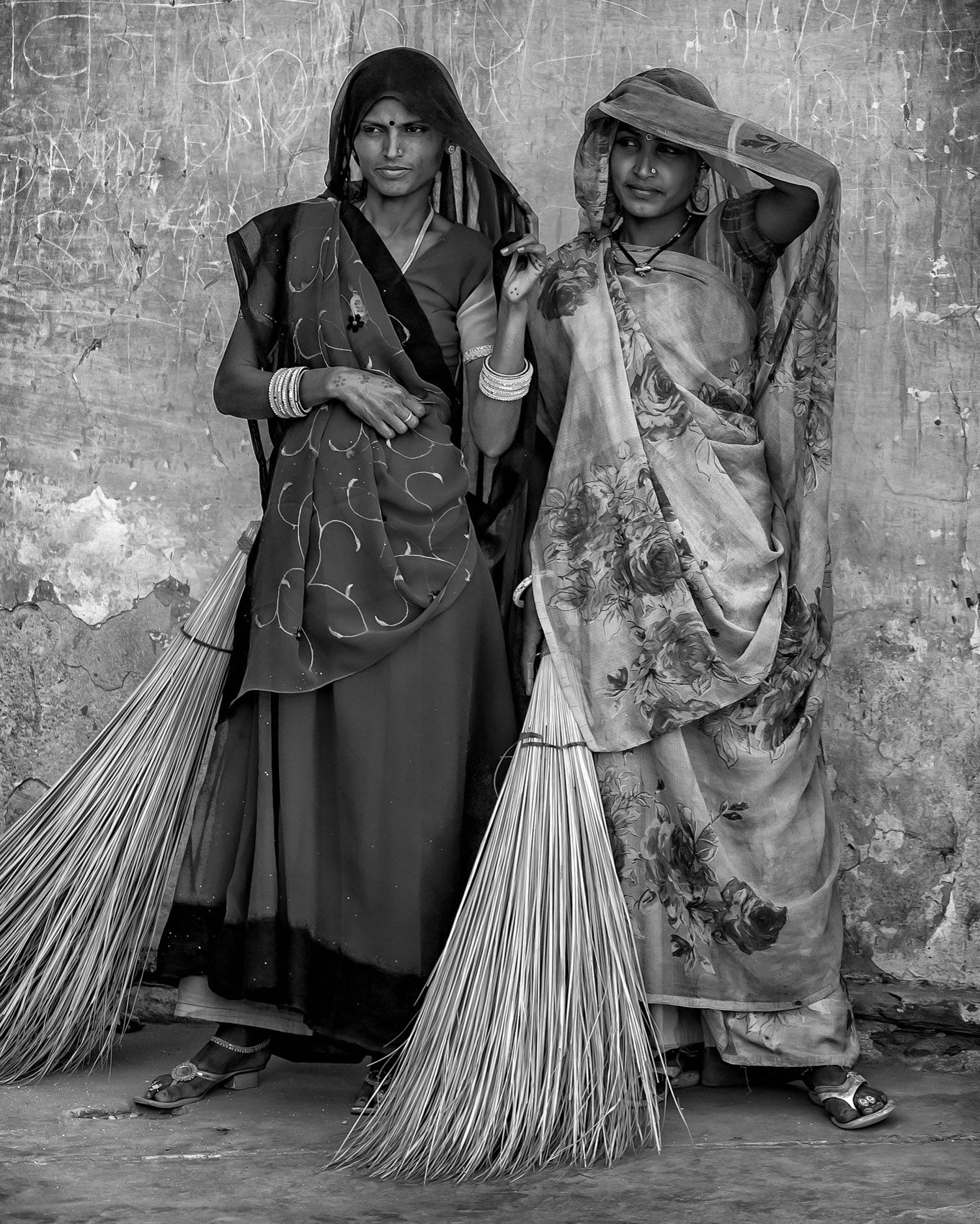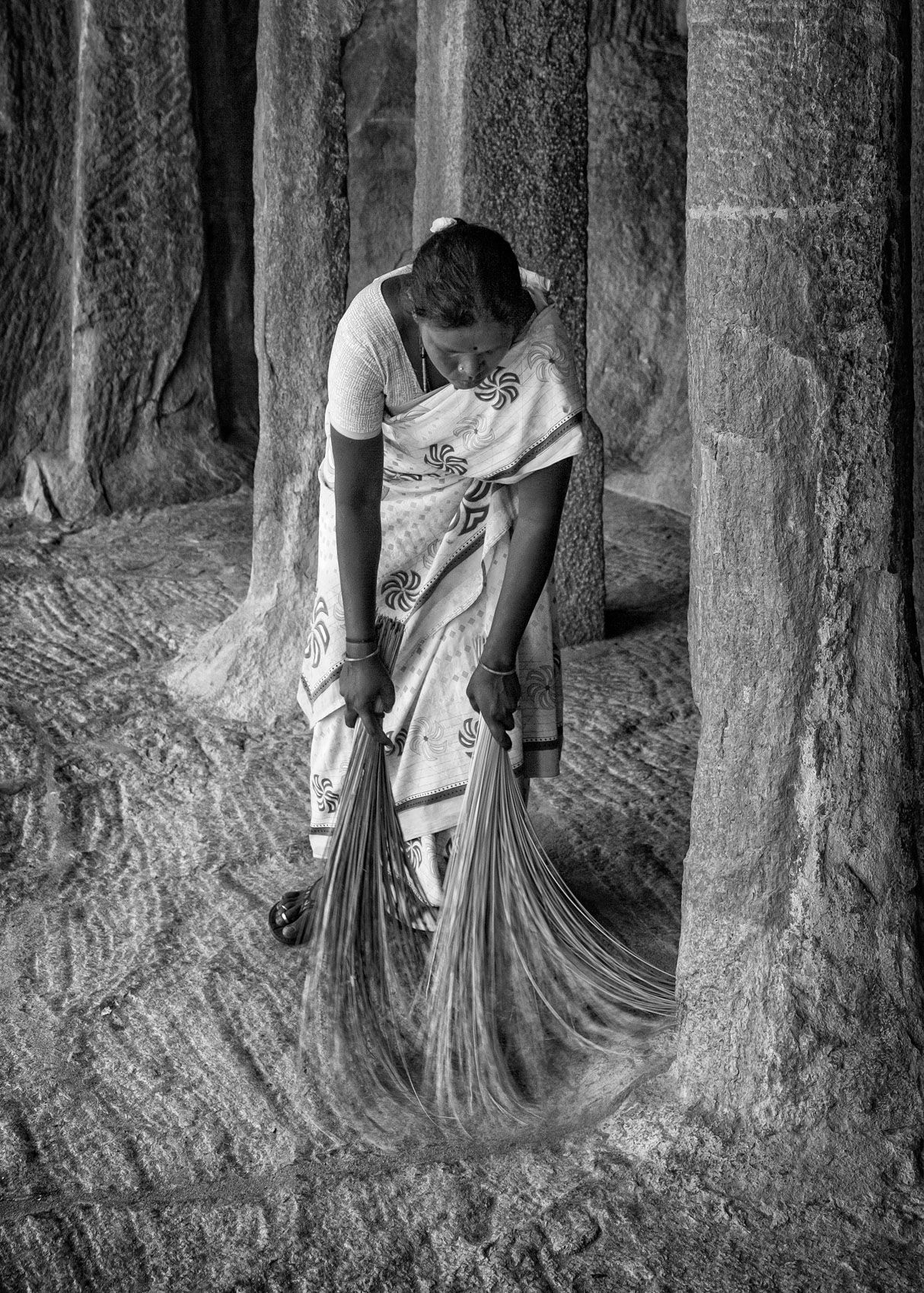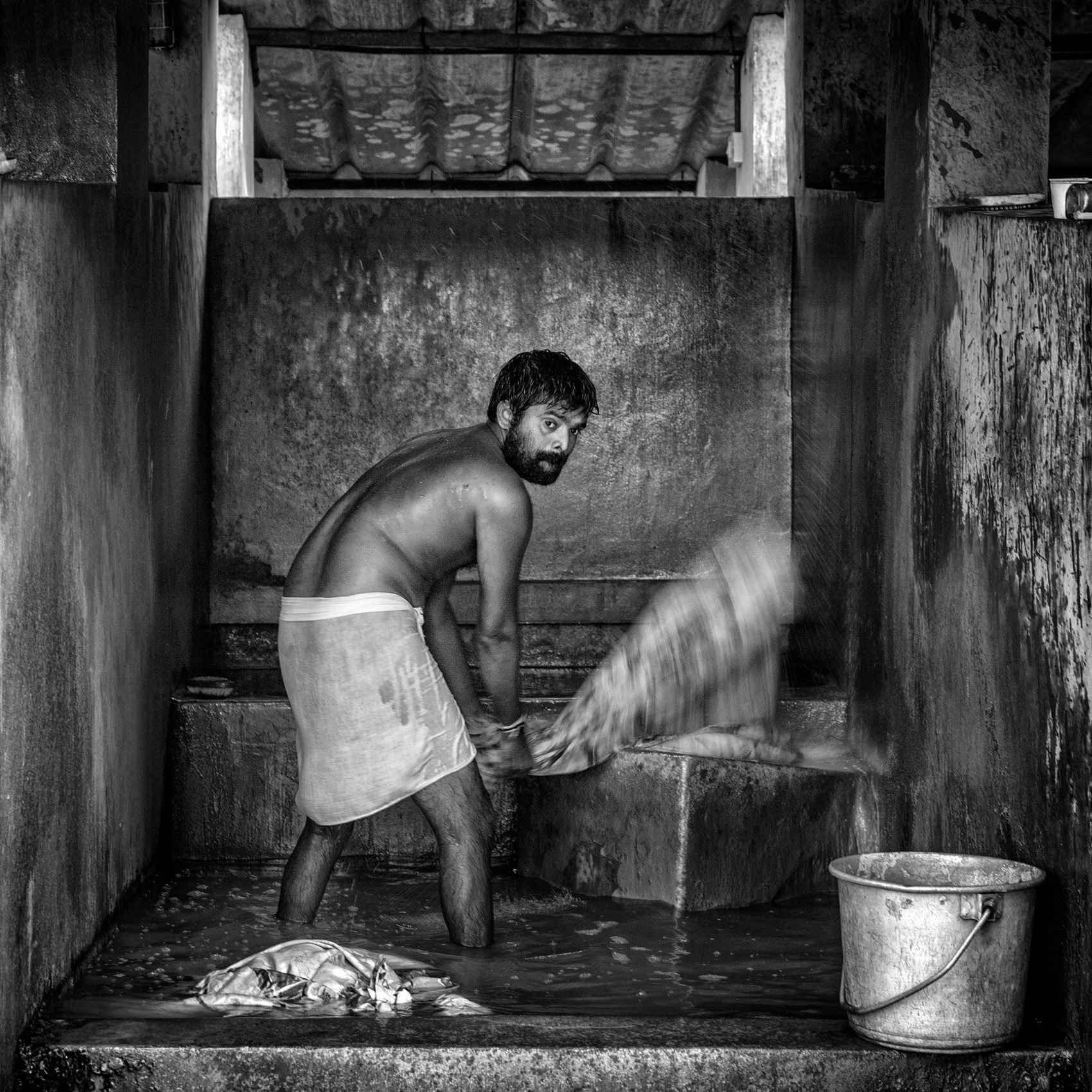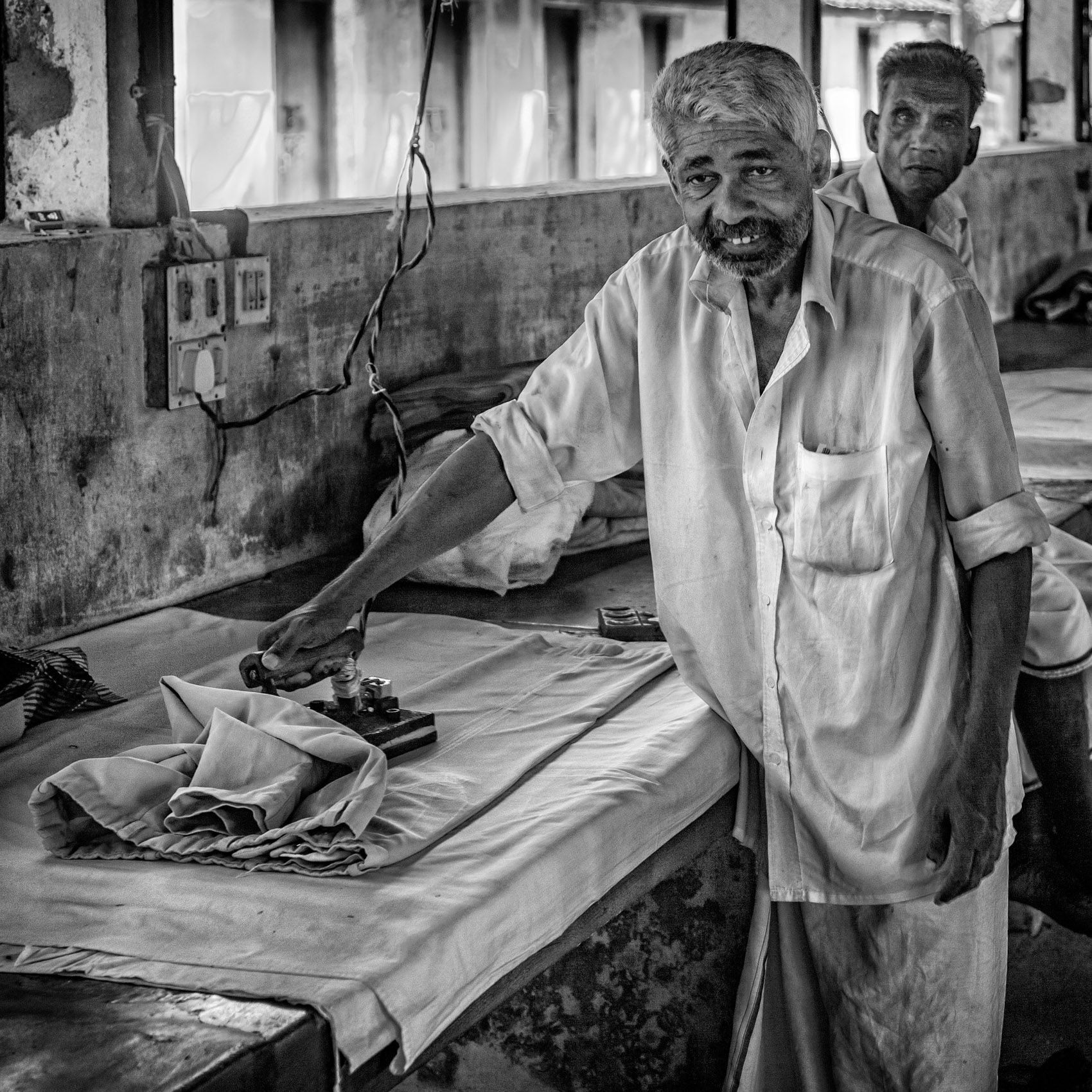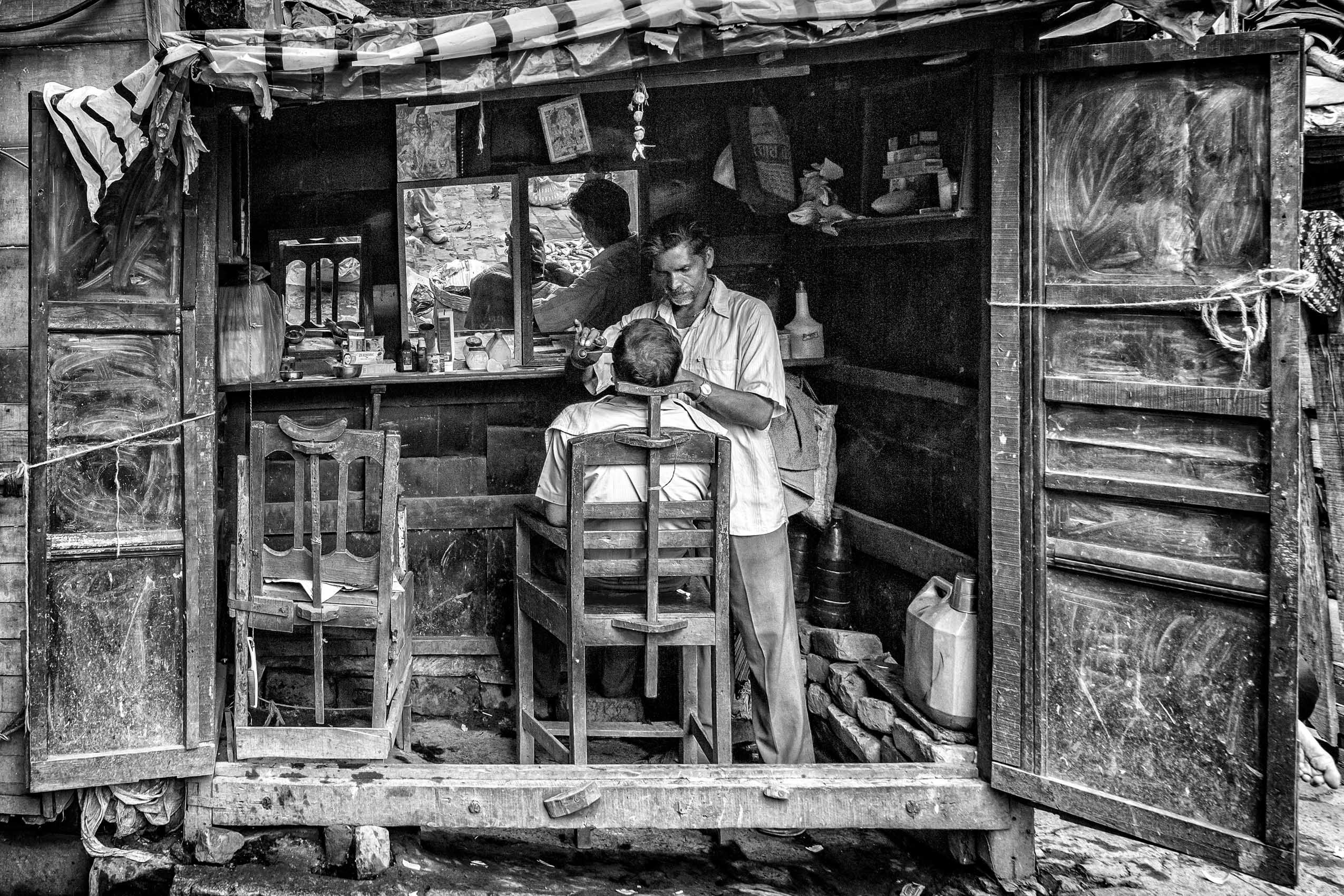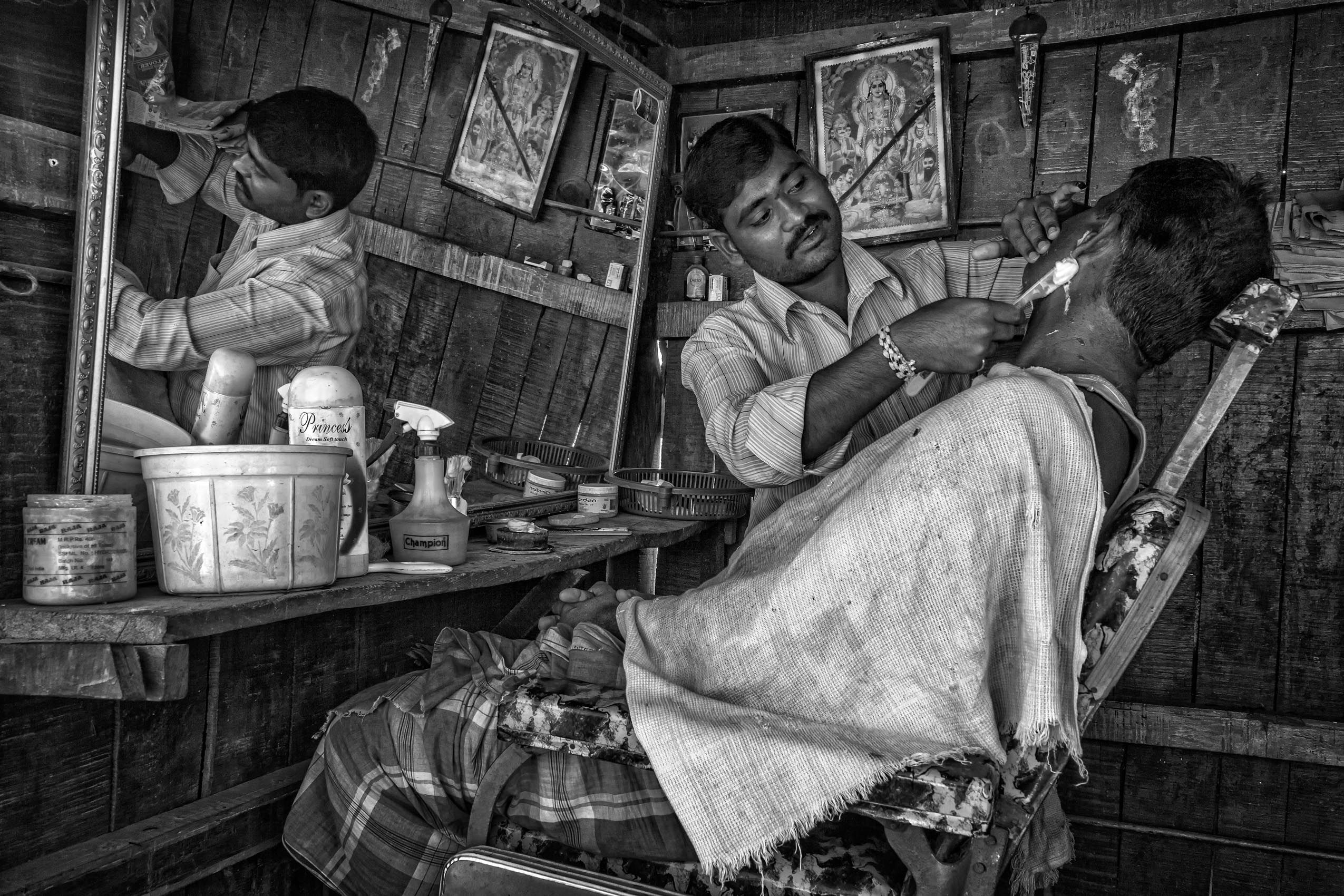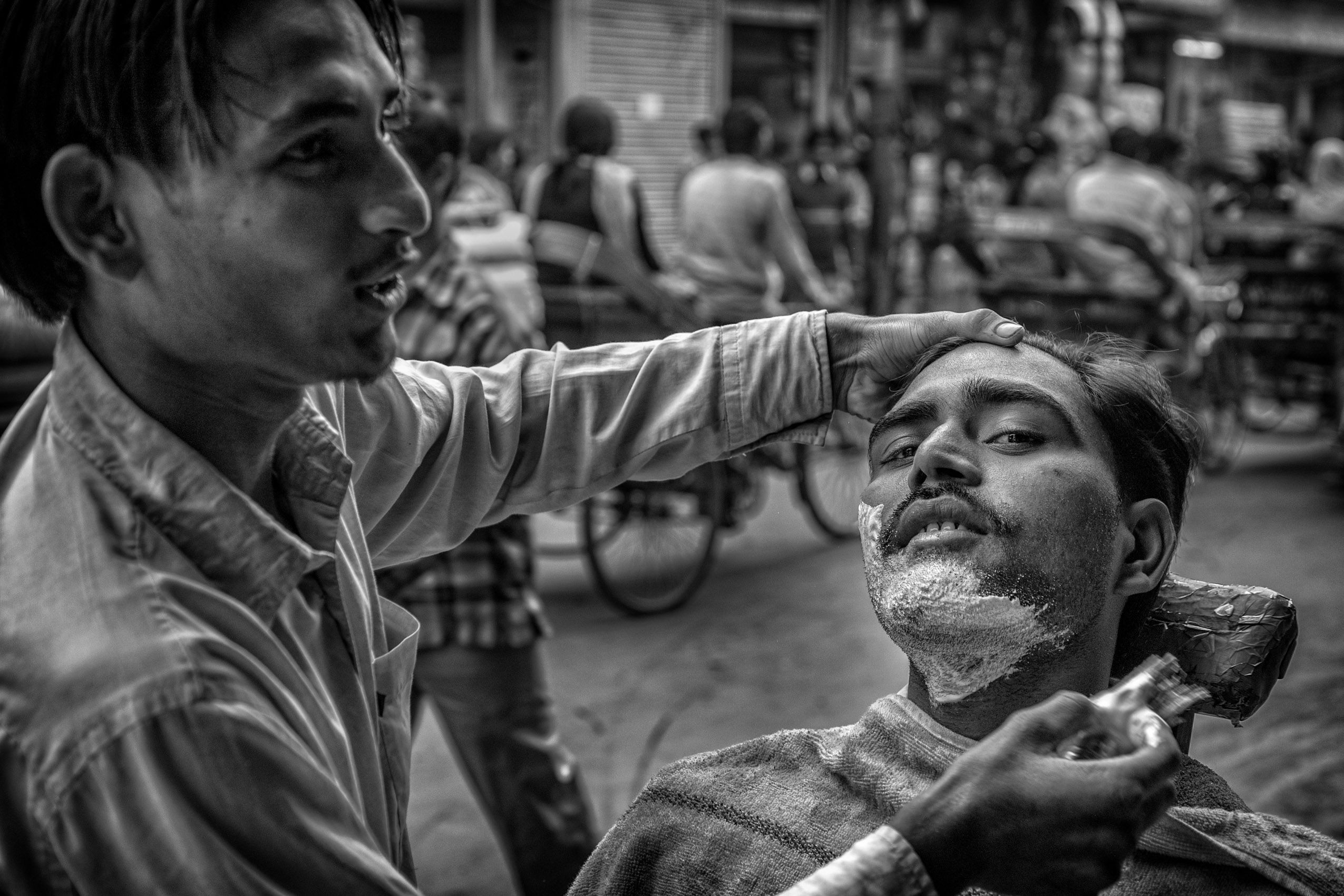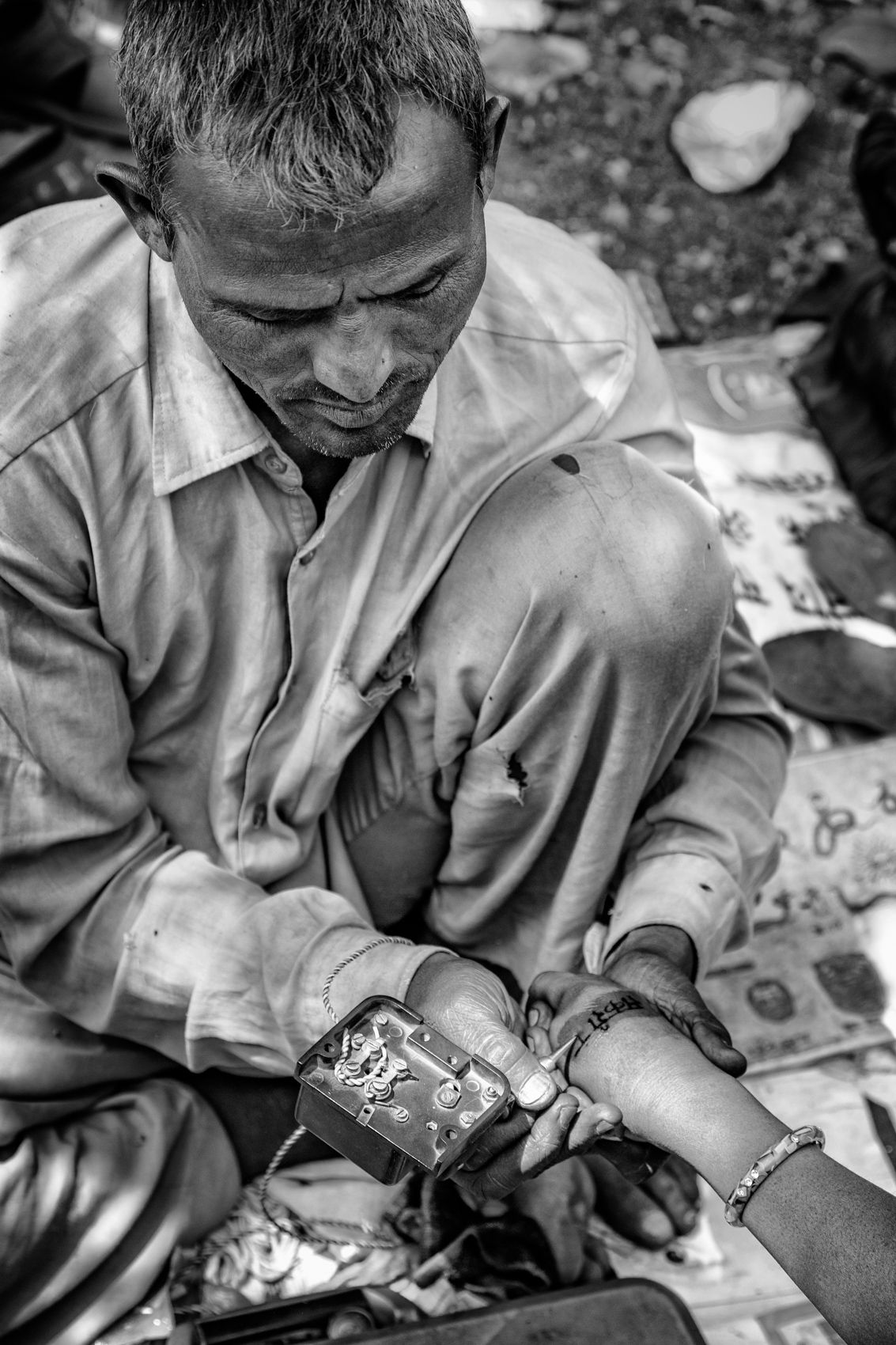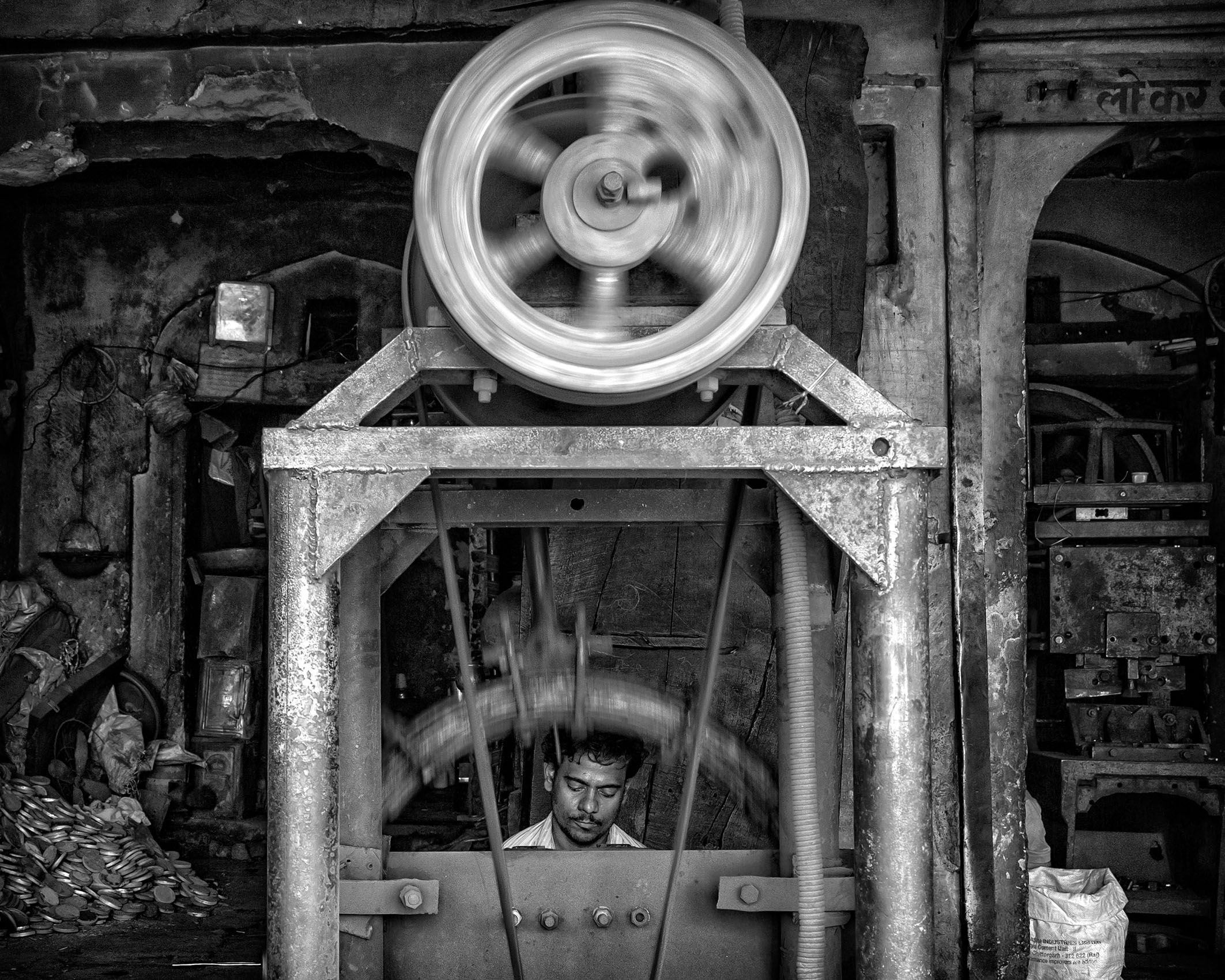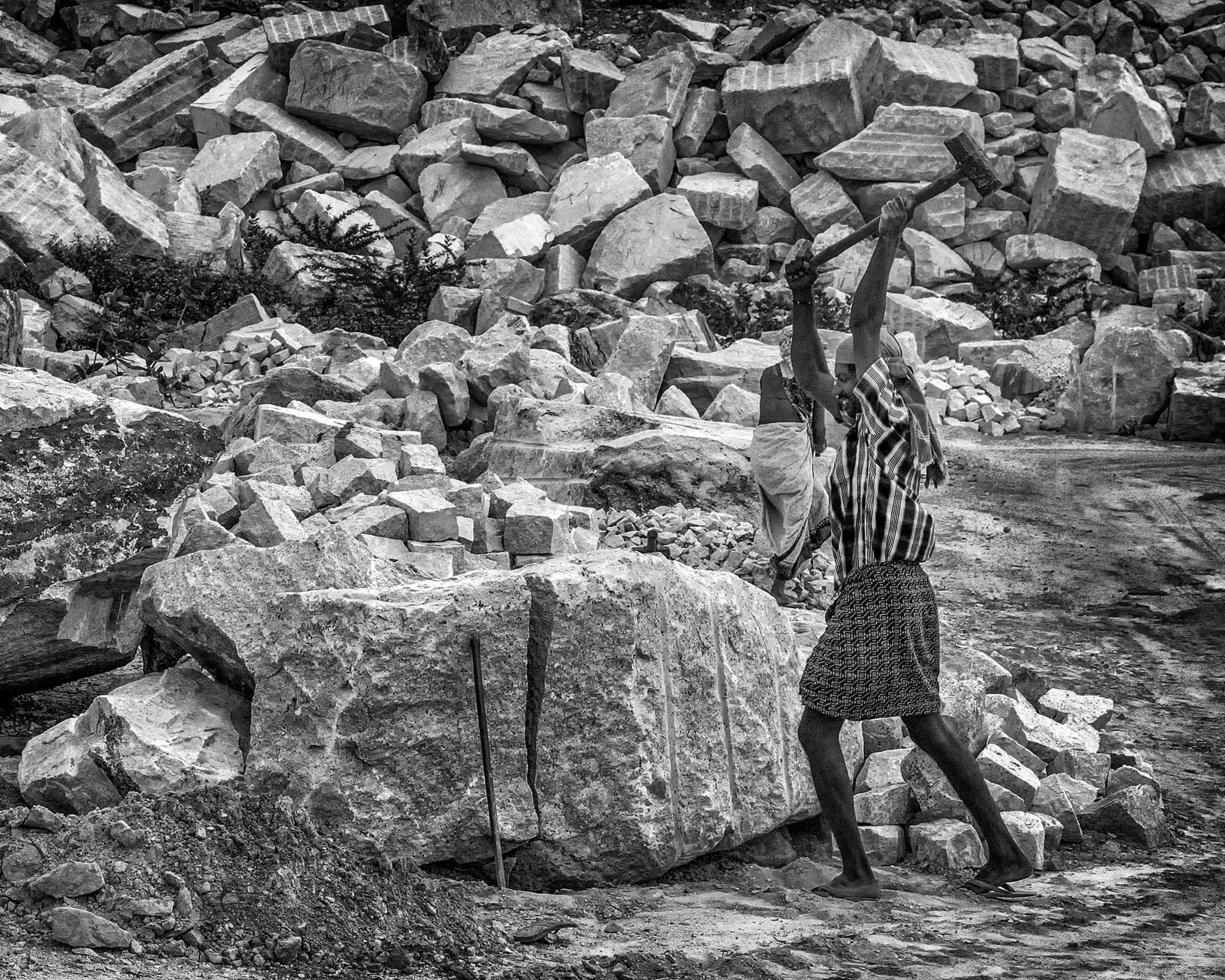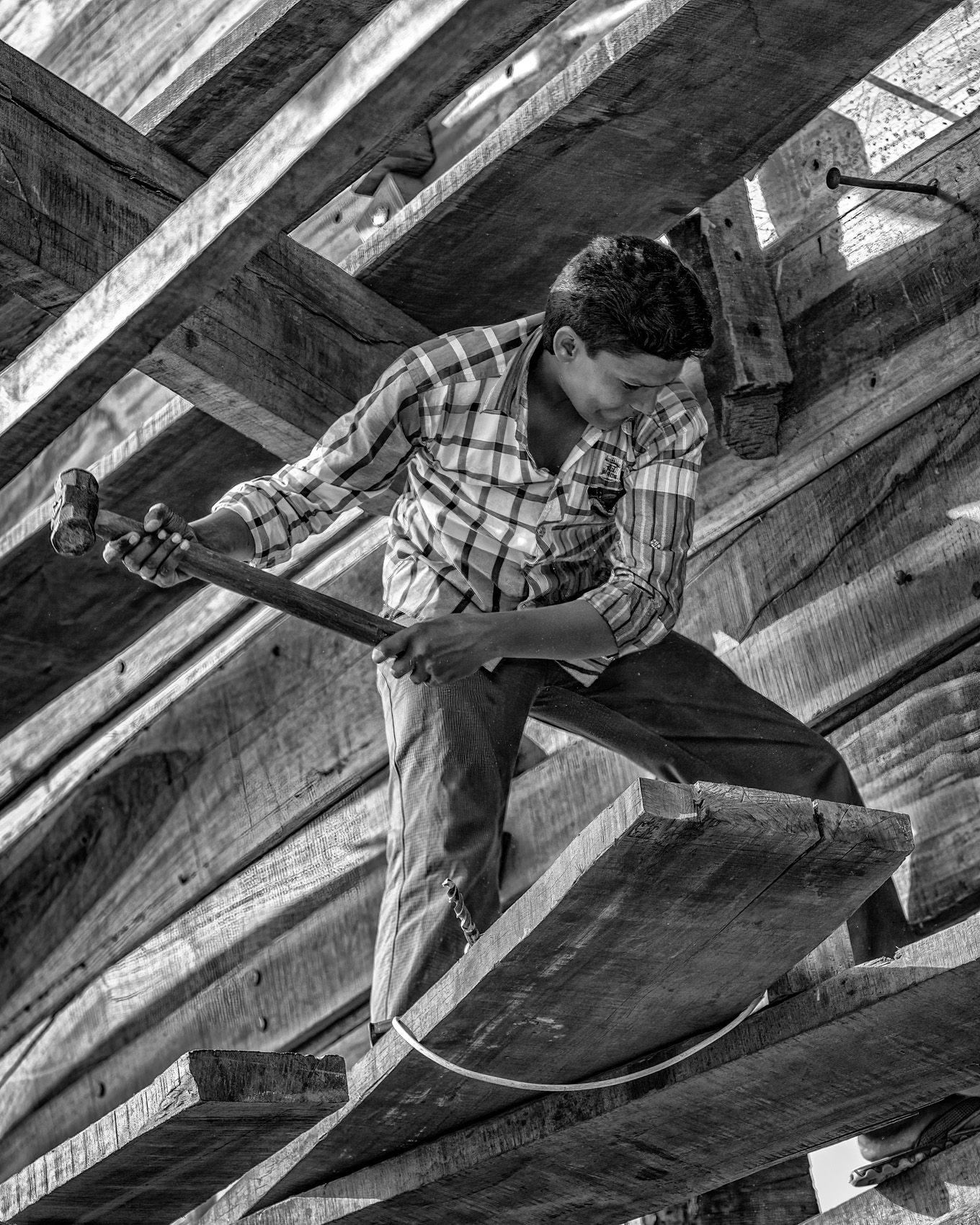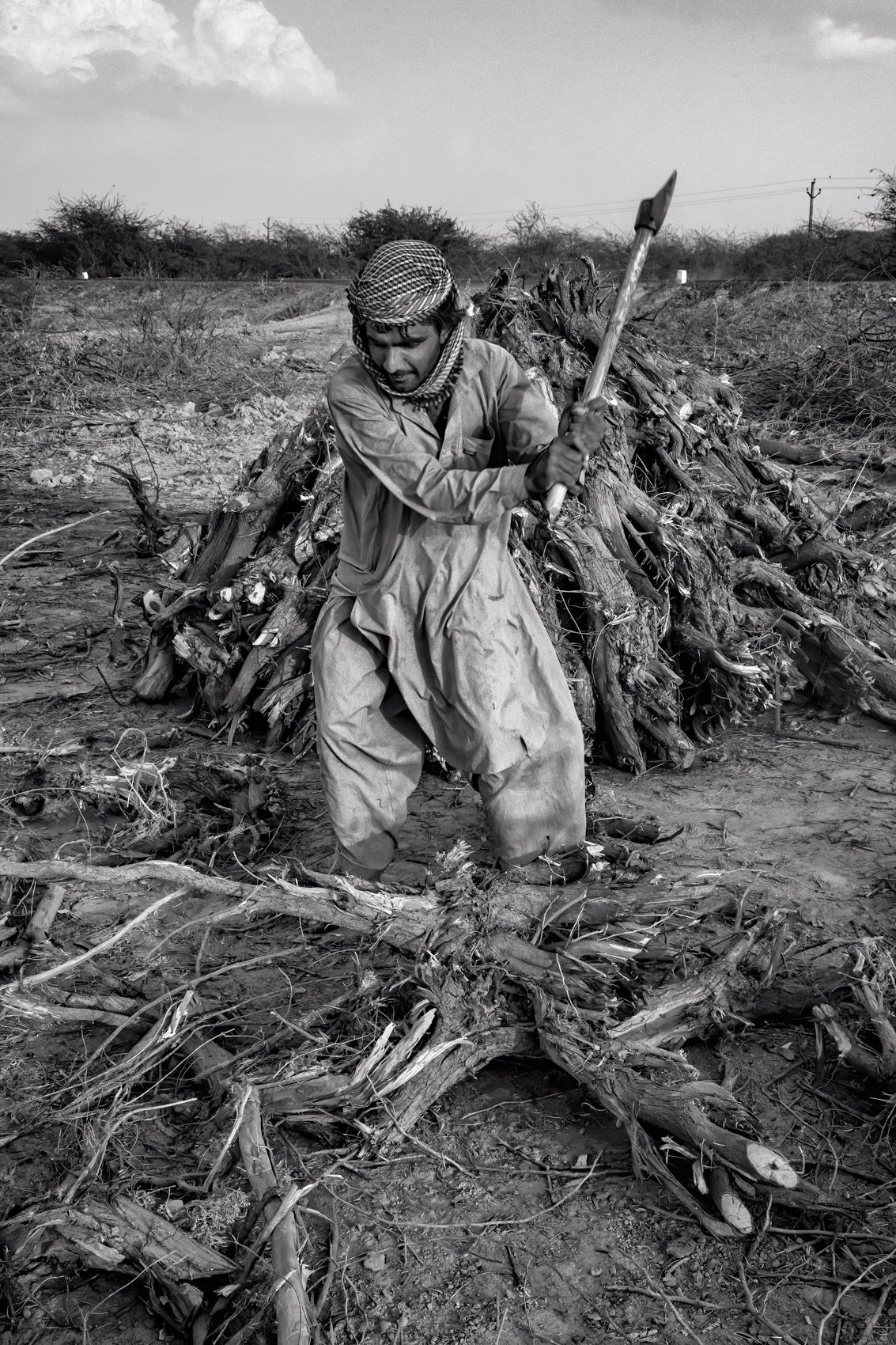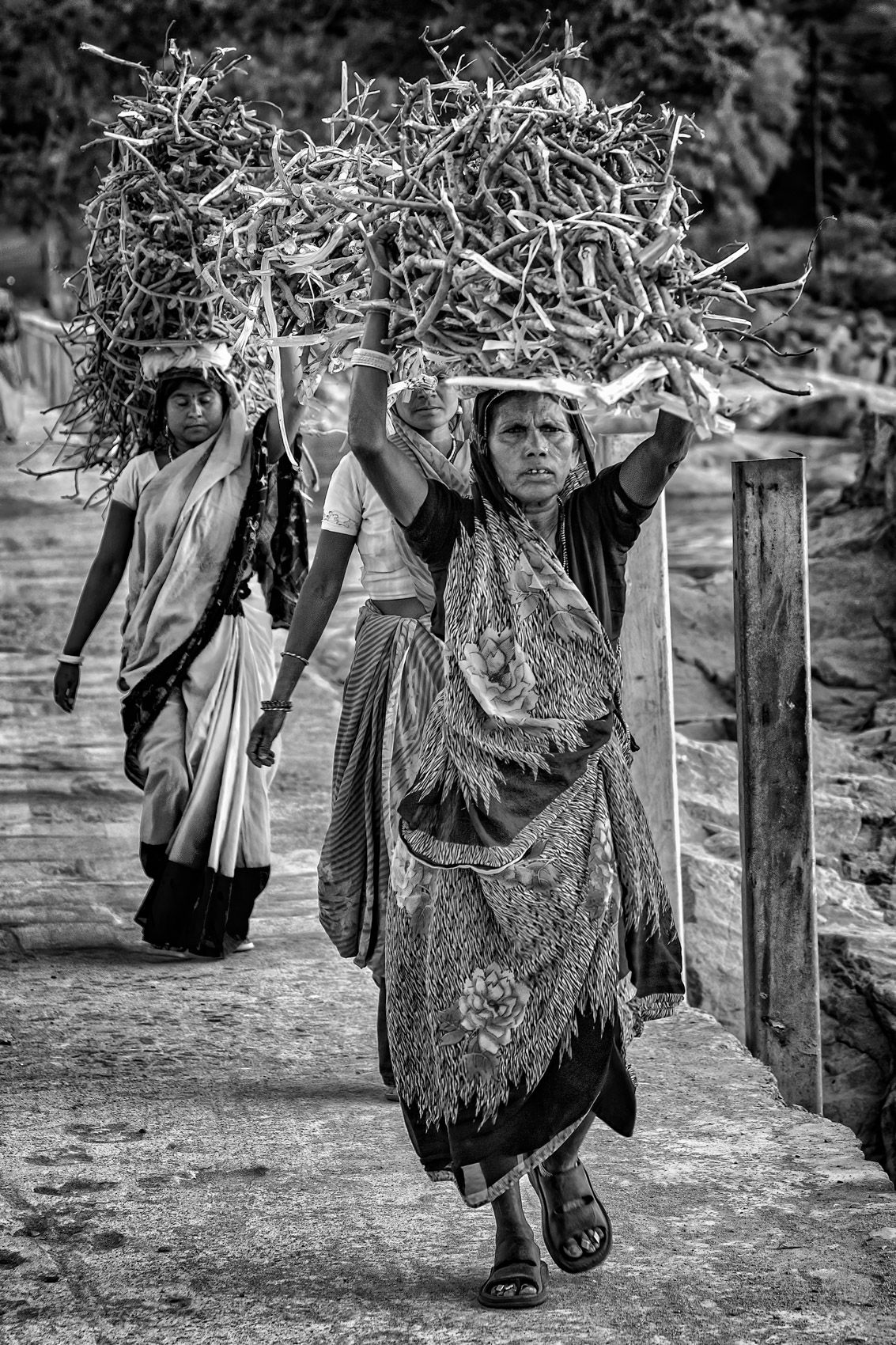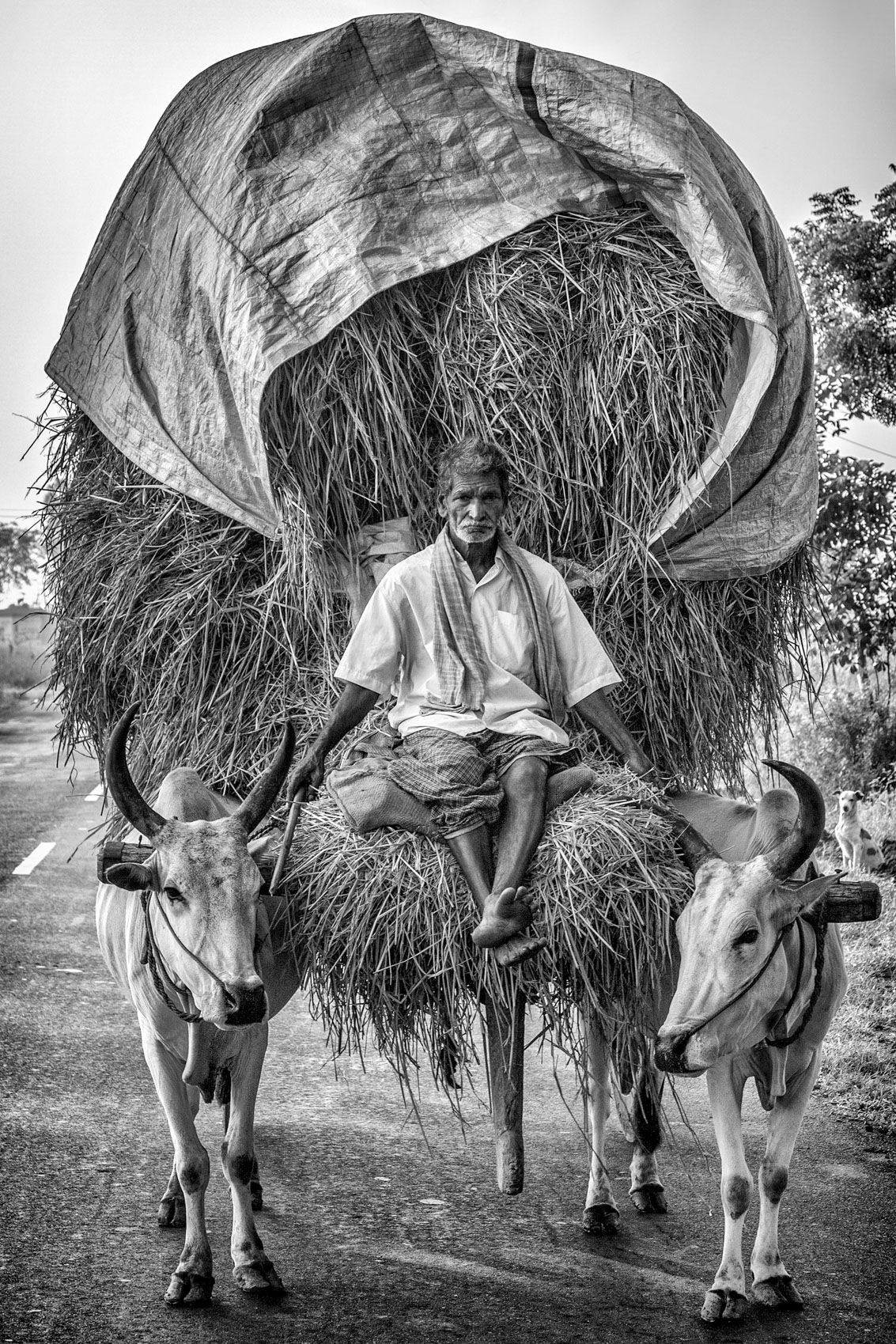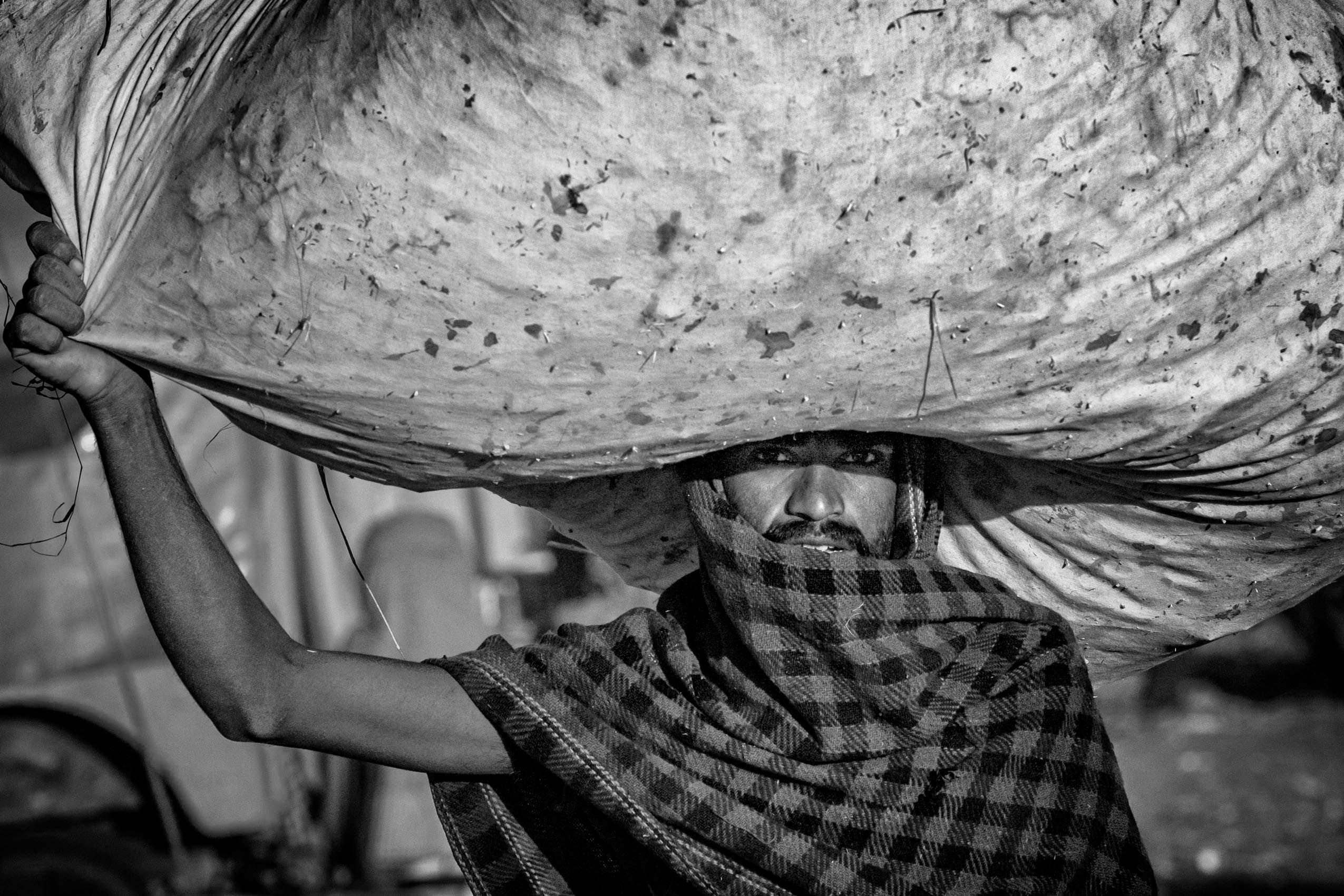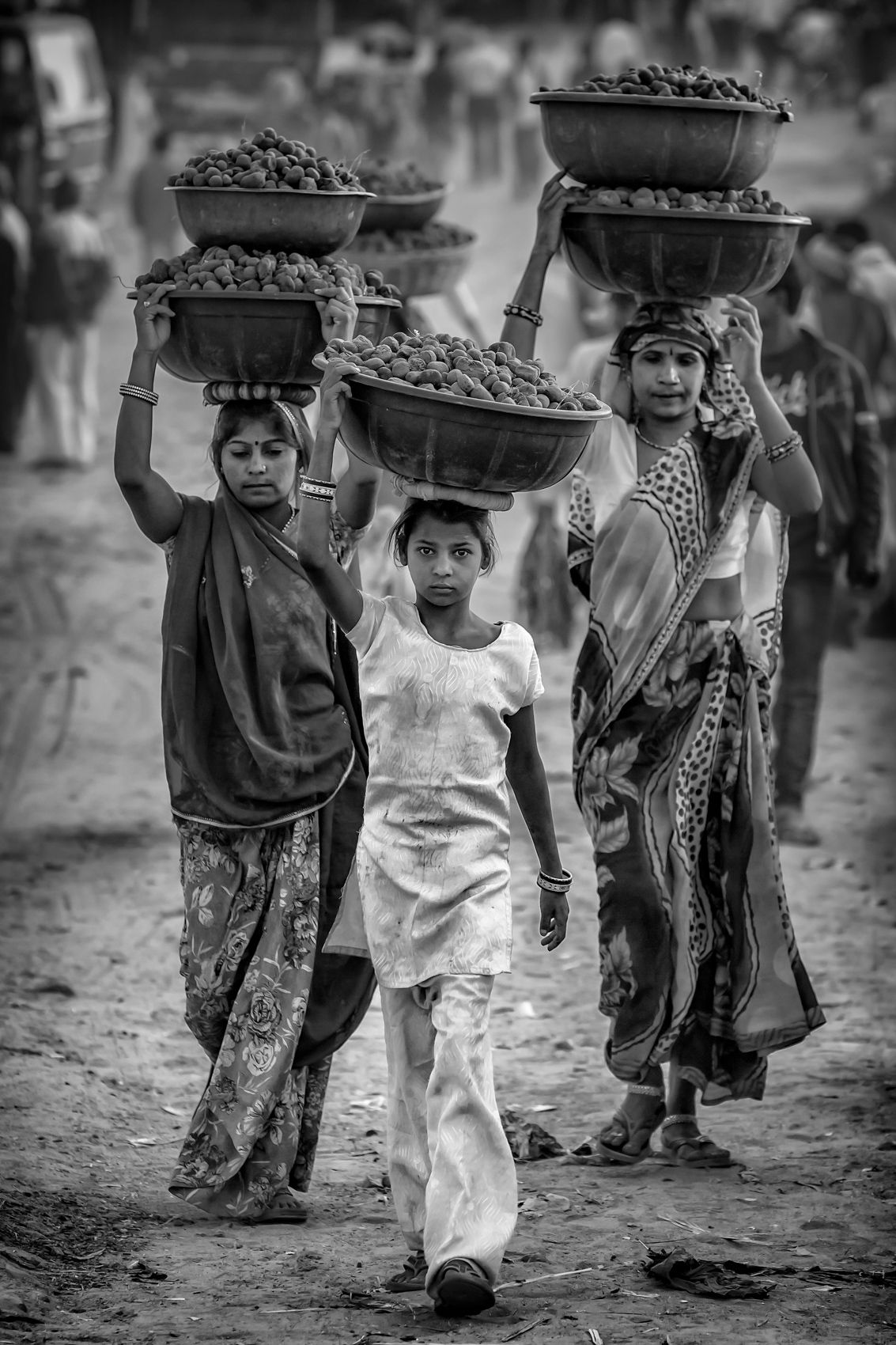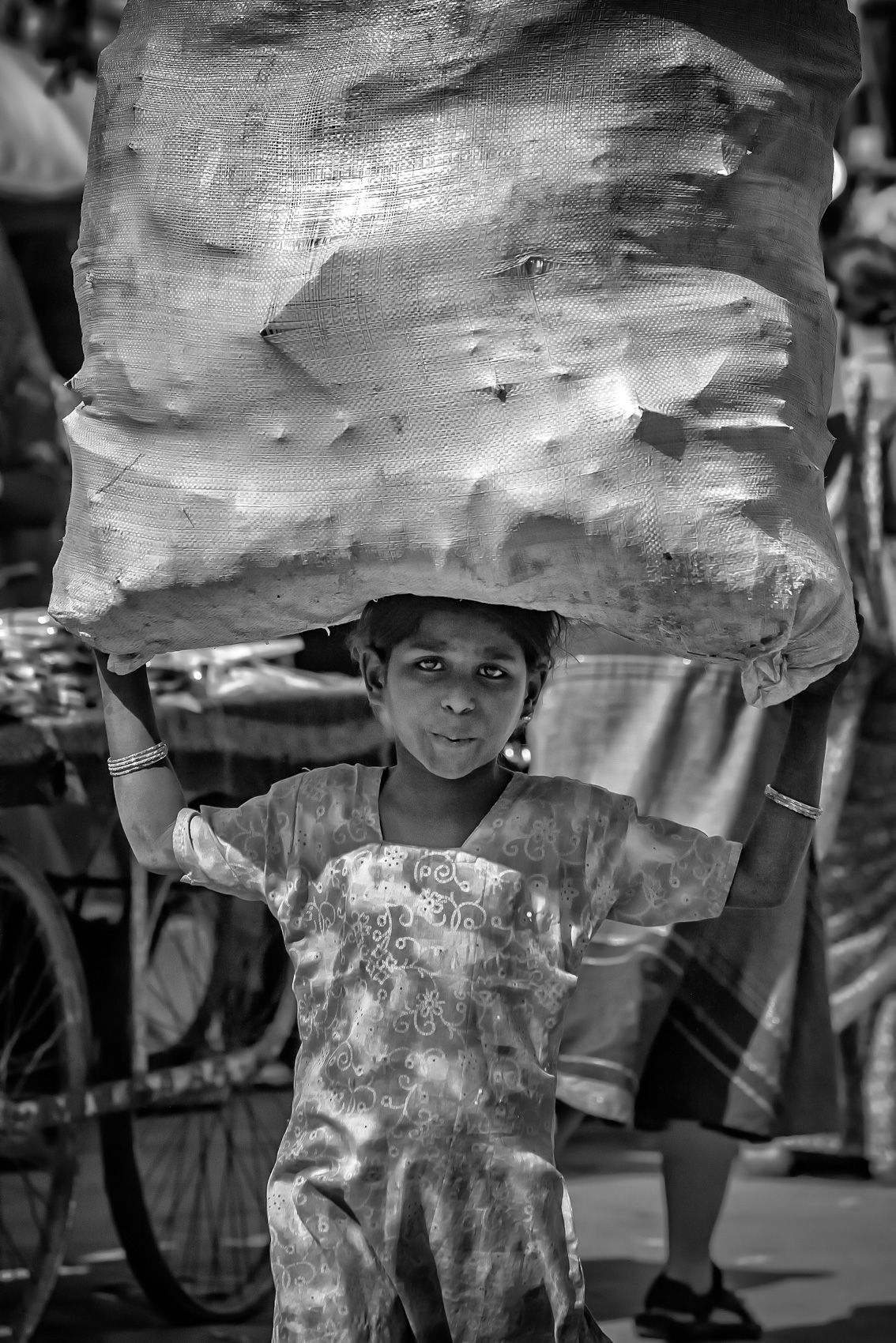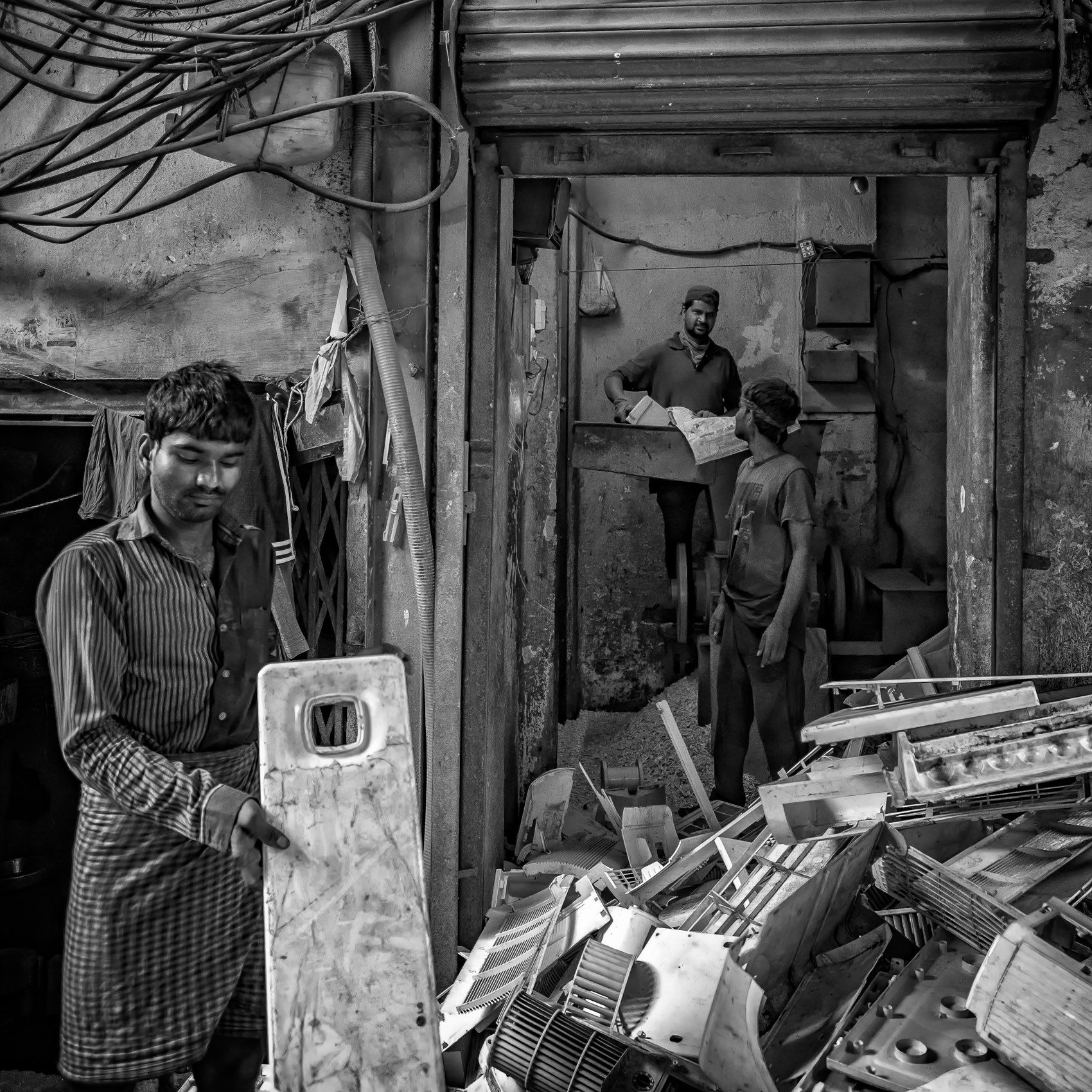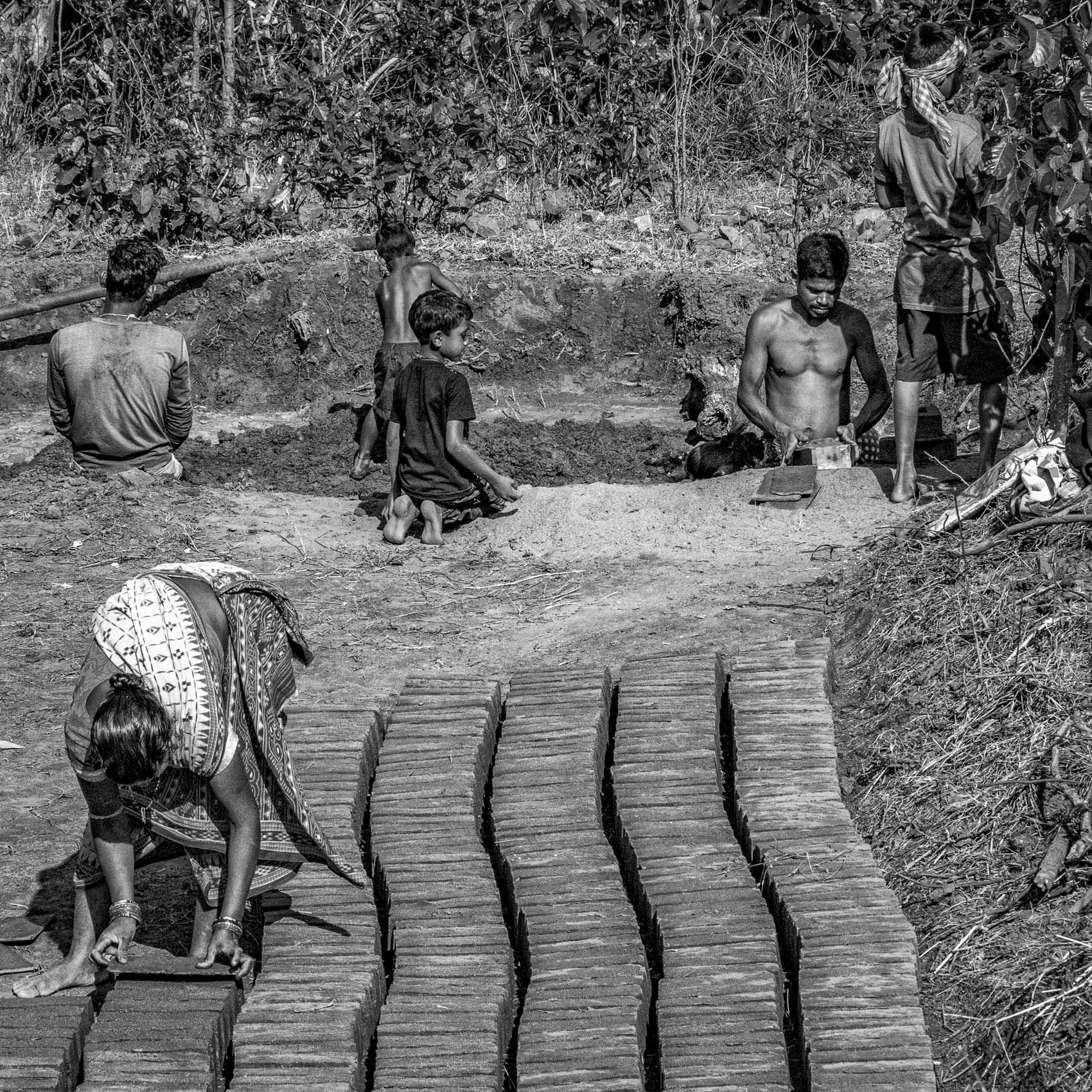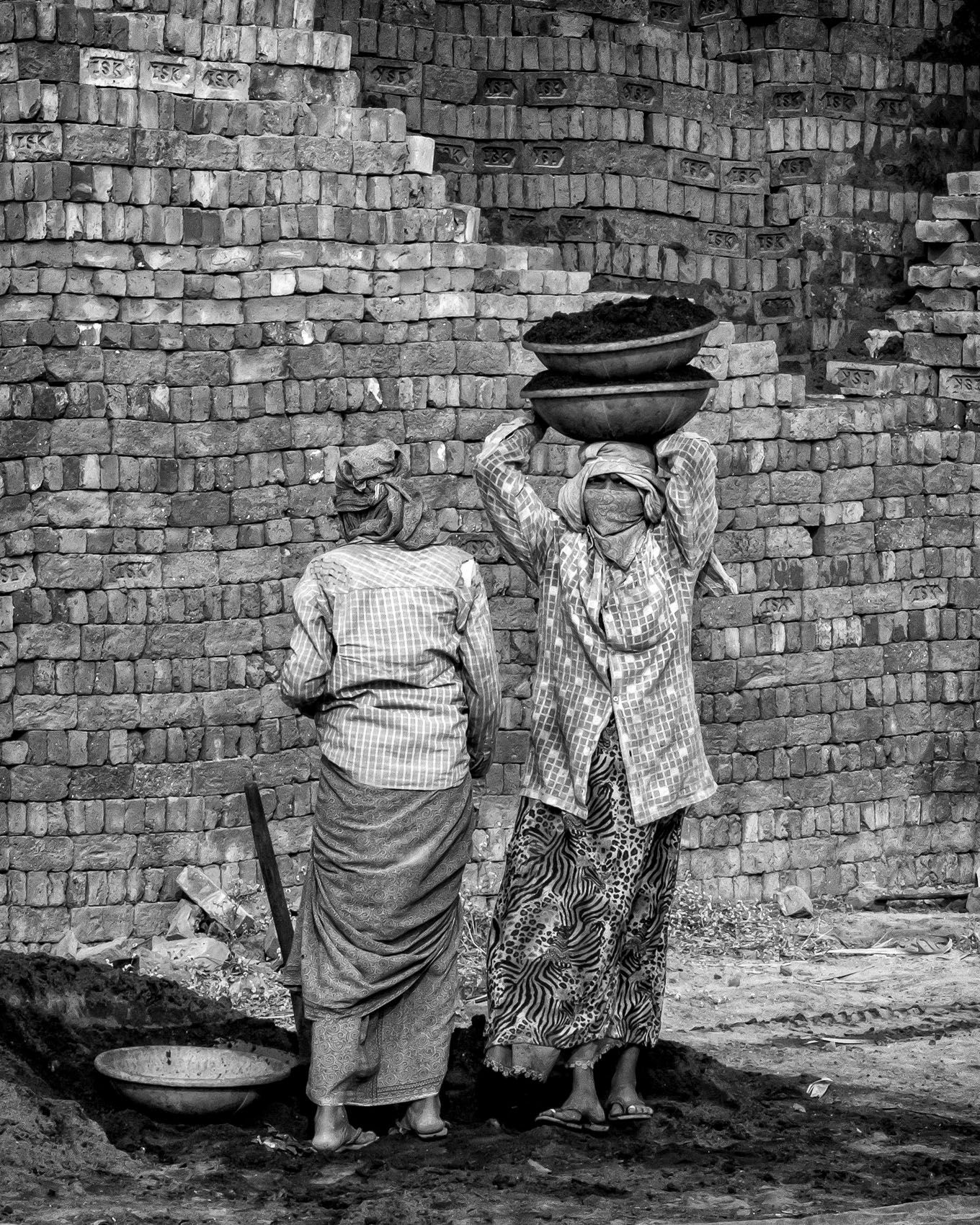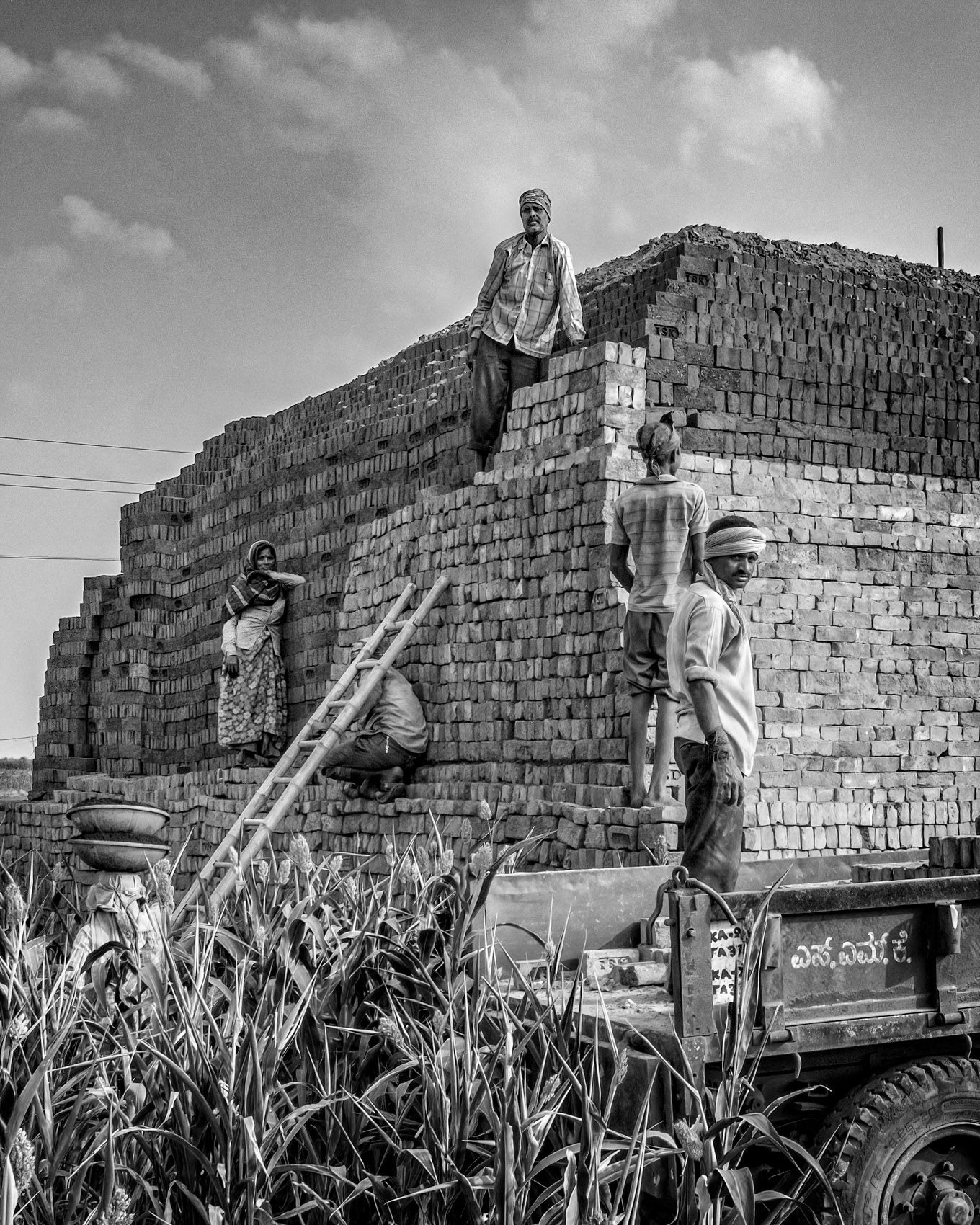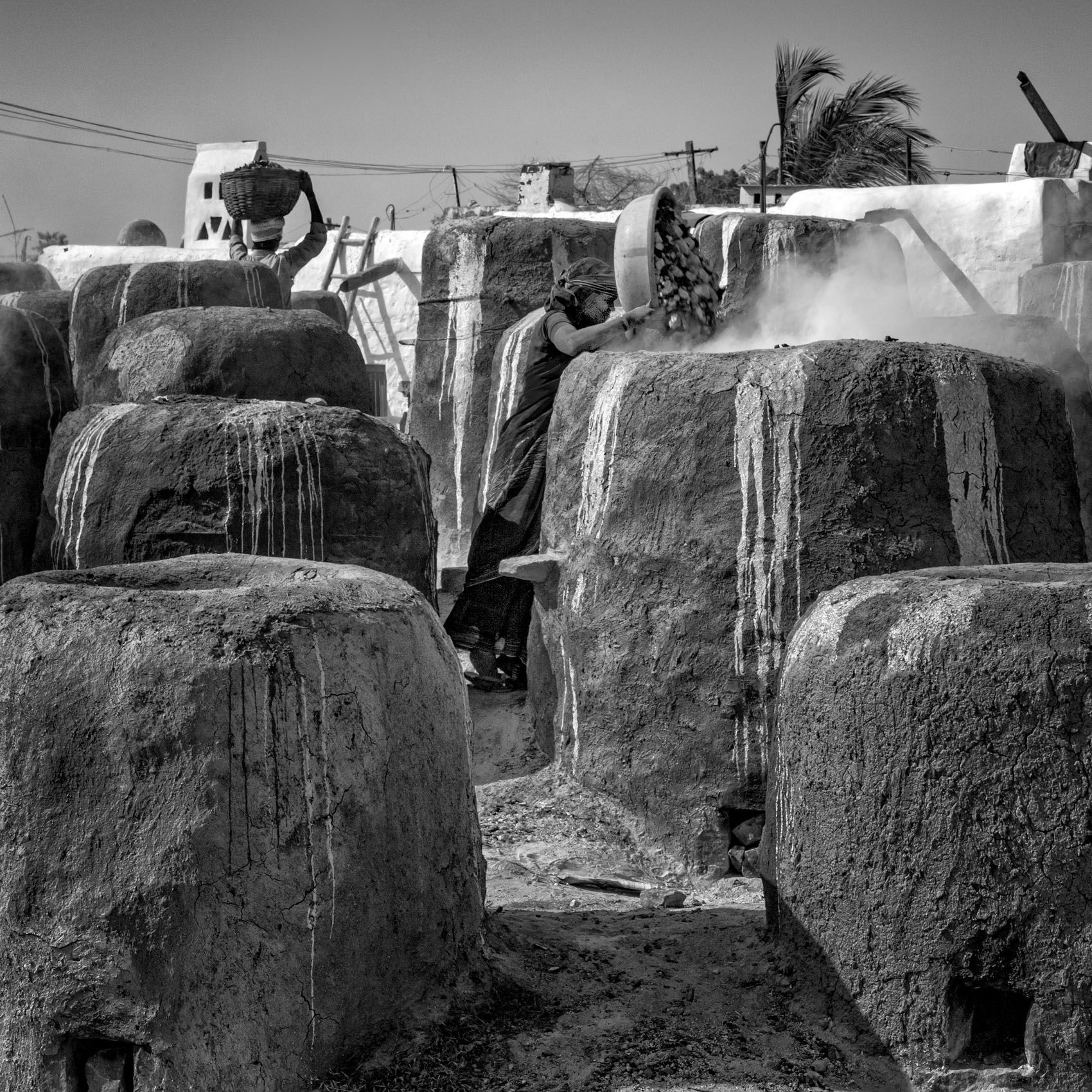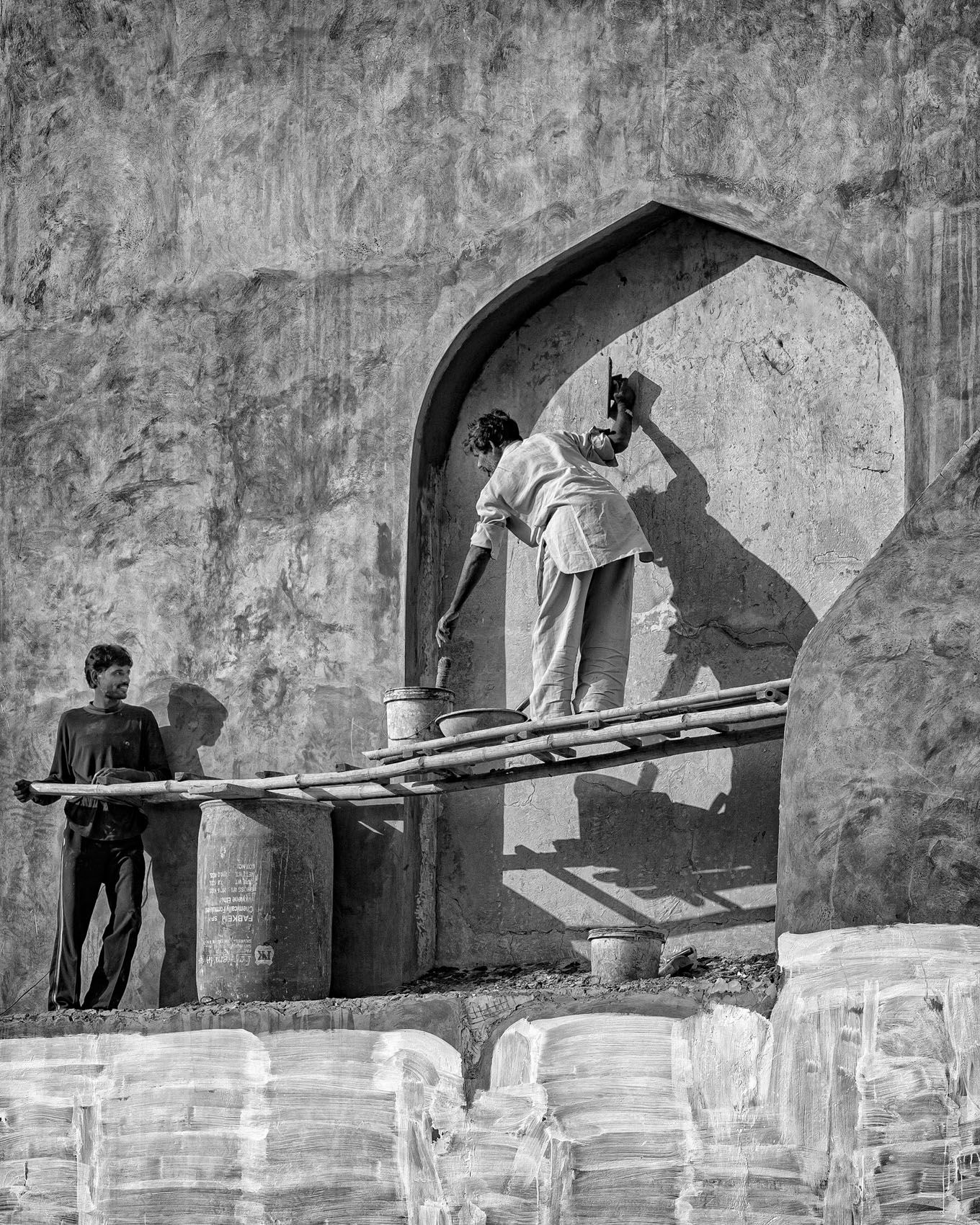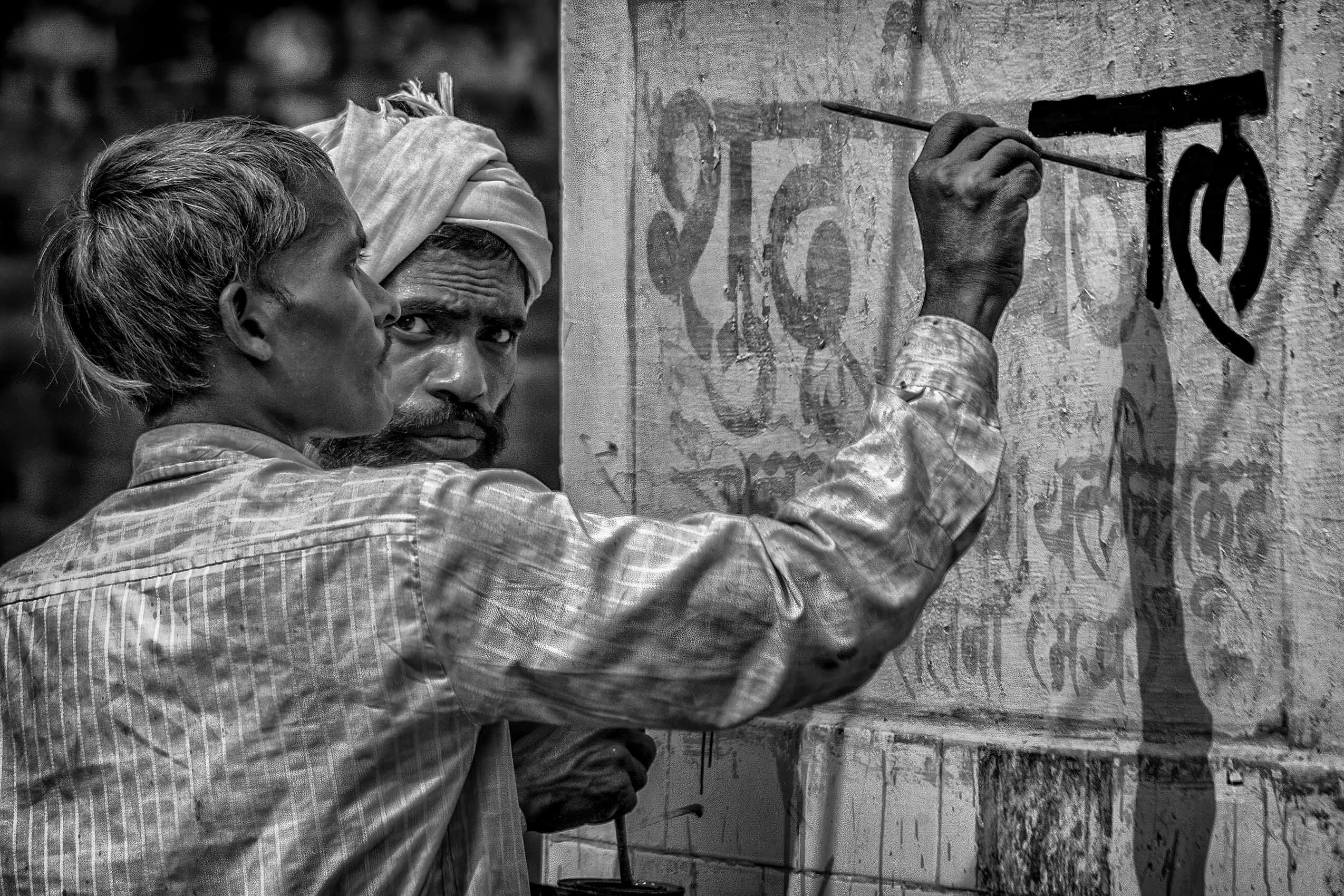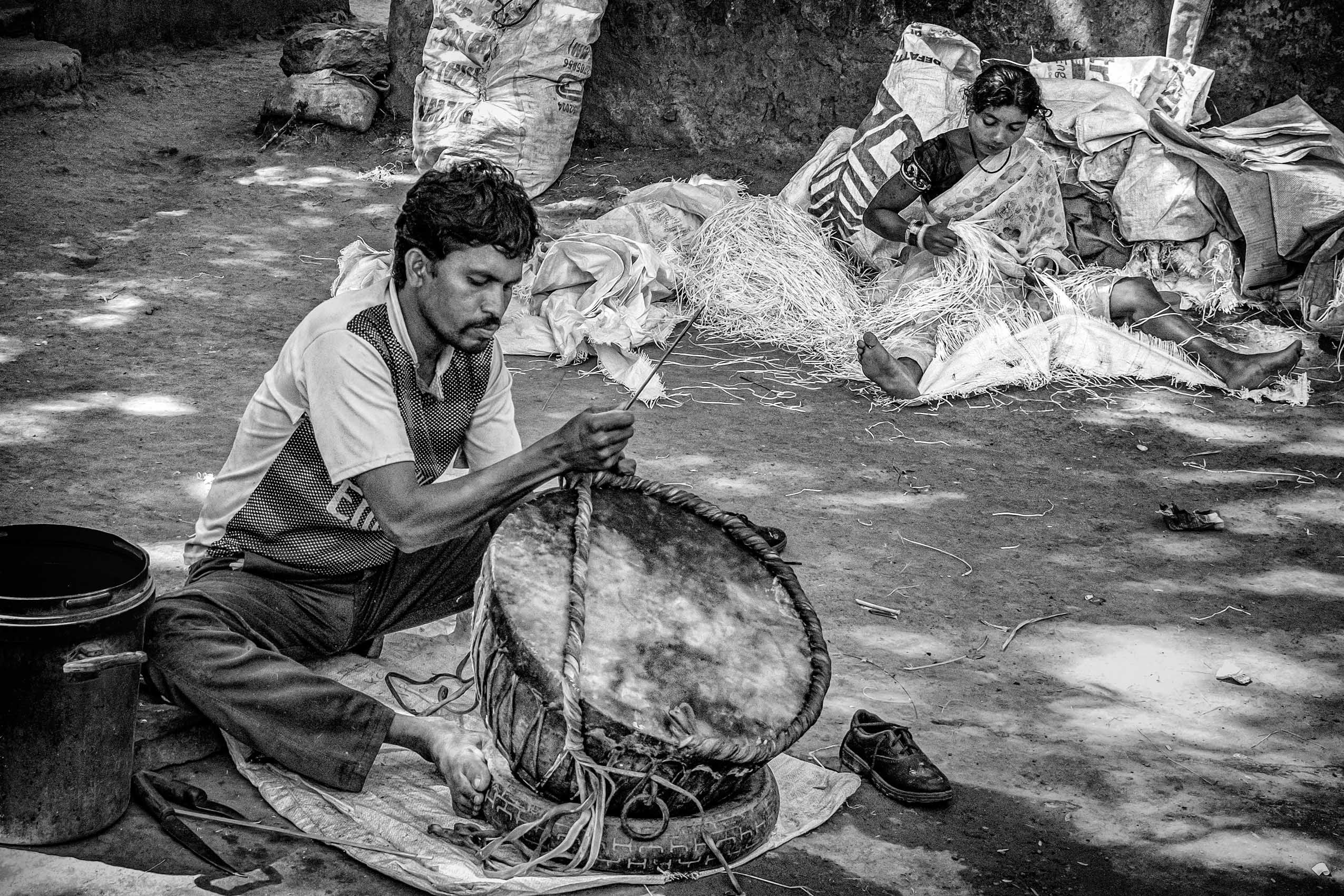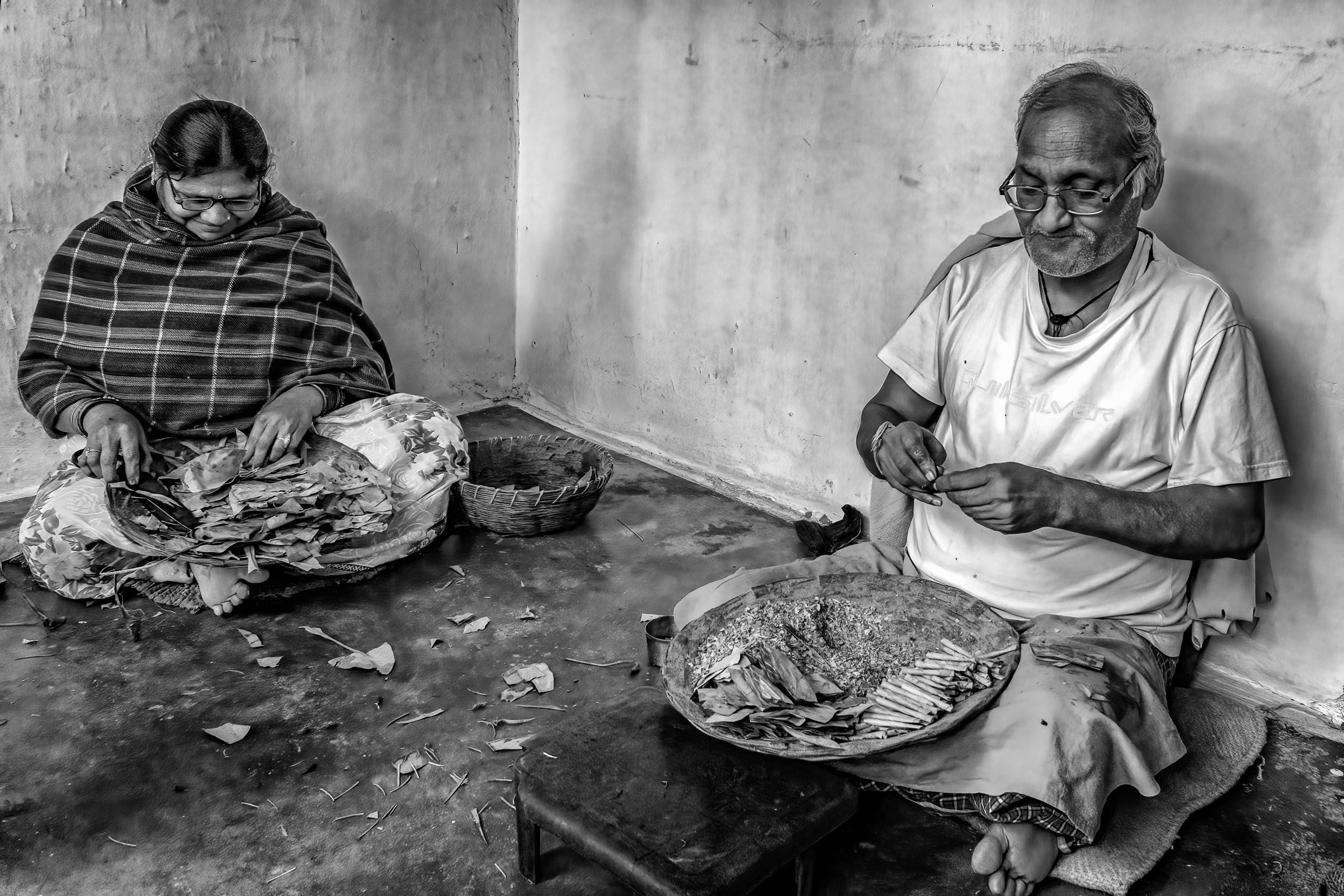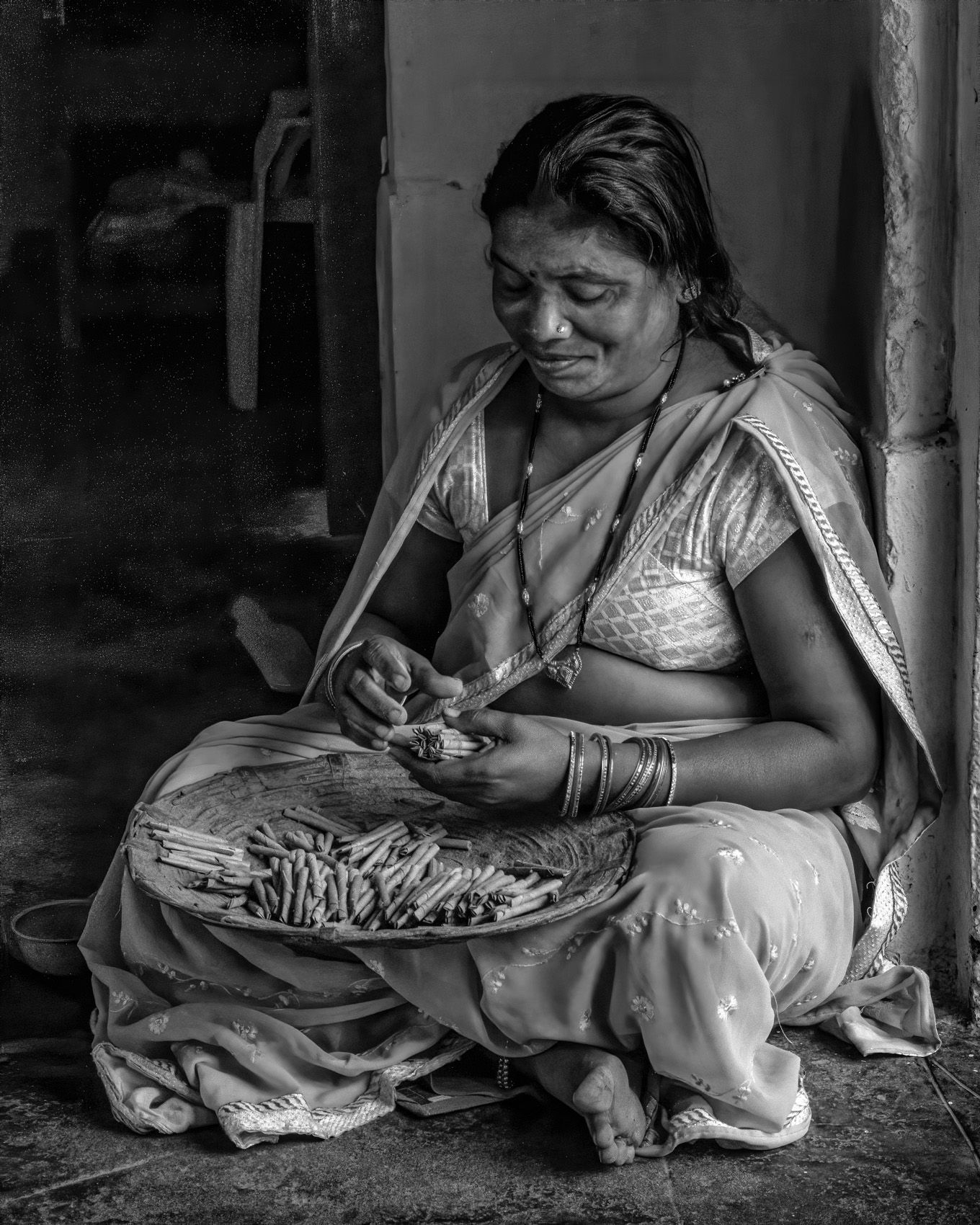INDIANS AT WORK I: Laborers, Service Workers, Cottage Industries
For many in the West today, the phrase “Indians at work” is likely to evoke remote call centers; or, for those attuned to the global economy, perhaps the steel, pharmaceuticals, or IT industries. But beyond or beneath the dynamic contemporary India of the cosmopolitan urban elite persists another India—primarily agrarian and poor and deeply traditional in its culture, including in its forms of labor. It is these latter Indians at work in their towns and villages or in urban ghettos who are the primary subjects of my project. Here it is worth noting that the Hindu caste divisions that have organized Indian society since antiquity and still hold deep if attenuated power, especially in rural and village India, are a system of social stratification based upon occupation. The four basic categories (varnas), in descending hierarchical order, are priests and teachers; rulers and warriors; farmers, traders and merchants; and laborers. Outside and below this hierarchy are the achhoots, dalits or “untouchables,” whose traditional occupations were (and often still are) considered polluting. There are said to be more than 25,000 sub-castes, each tied to a particular occupation and traditionally hereditary. In this system, one’s occupation was and, for many, still is not only a means of livelihood but an essential identity and set of responsibilities, grounding one’s place in the world. To an extent far greater than is the case in the contemporary West, in village India who you are remains inextricably tied to what you do.
Although photography was a primary motivation for my first visit to India in 2007, I did not arrive with the intention of documenting Indians at work. That project spontaneously arose in the first few days after my arrival, as I was drawn to artisans practicing their crafts and others engaged in traditional forms of labor in the villages and small towns of Rajasthan. Over the course of eleven journeys through various parts of India between 2007 and 2020, I have continued to seek out opportunities to photograph Indians at work earning a living in traditional occupations—as laborers and artisans, street vendors and shopkeepers, merchants and traders, artists and entertainers. Over time, this project has taken shape as a documentation of local and traditional modes of labor persisting under pressure during a period of profound economic, social and technological change. But it has also become an attempt to shape the visual record of my personal experience into an artistically compelling form, in images that capture something of the bewilderingly rich, complex and contradictory Indian ethos as embodied in the daily lives and activities of people whom I have encountered. In other words, while making images of individuals or groups of people actively engaged in a particular kind of work, I am also gesturing toward the complex web of cultural values, understandings and experiences which makes that work meaningful within the world those people inhabit. These are cultural portraits in the sense that, merely by going about to make a living by doing their jobs, the people I photograph are at the same time constantly in the process of creating and recreating their culture.
The body of work represented in these galleries includes images from all eleven of my journeys to India between 2007 and 2020. The arrangement into multiple galleries is for convenience in navigation, and the present classification represents only one possible solution; there are connections among many of the images scattered into separate galleries here. Hover over an image for specific information regarding the subject and location.

